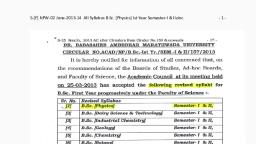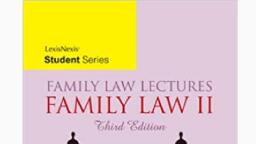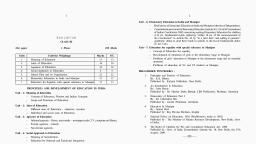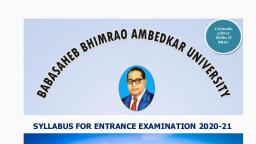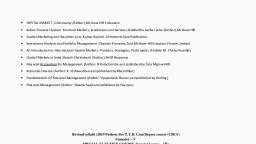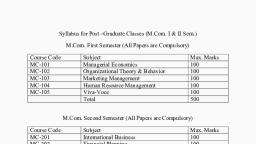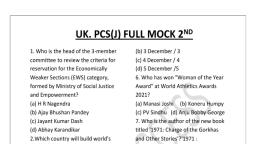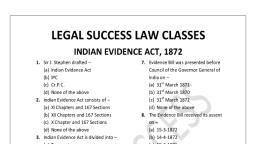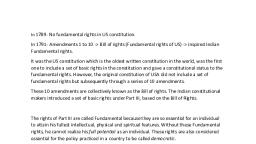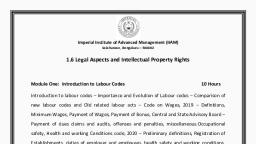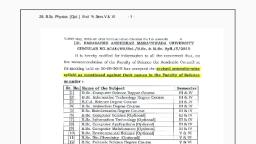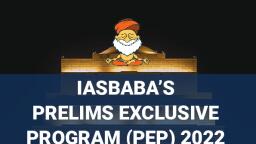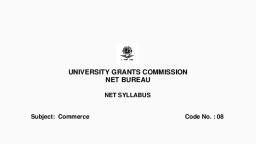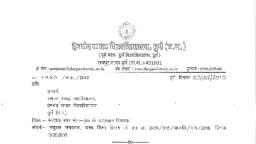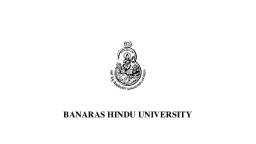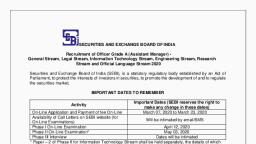Page 1 :
LL.B. THREE YEARS COURSE, (ANNUAL SCHEME), , SYLLABUS AND COURSE COMPONENT, , FIRST YEAR, , SESSION 2020 – 21, , SECOND YEAR, , SESSION 2021 – 22, , THIRD YEAR, , SESSION 2022 – 23, , [ALL SUBJECTS]
Page 2 :
S. No., 1), 2), 3), 4), 5), 6), , 7), 8), 9), 10), 11), , 12), 13), 14), 15), 16), 17), 18), 19), 20), 21), 22), , 23), , 24), 25), 26), 27), , LAW SUBJECTS [LL.B.], NAME OF SUBJECT, CONSTITUTIONAL LAW, LAW OF TORTS AND CONSUMER PROTECTION, ACT 2019, FAMILY LAW – I (HINDU LAW), FAMILY LAW – II (MOHAMMEDAN LAW), LAW OF CONTRACT [GENERAL PRINCIPLES, AND SPECIFIC RELIEF ACT, 1963], SPECIAL CONTRACTS [SALE OF GOODS ACT,, 1930,INDIAN PARTNERSHIP ACT, 1932, LIMITED, LIABILITY PARTNERSHIP ACT, 2008], LEGAL LANGUAGE, LEGAL WRITING AND, GENERAL ENGLISH, LEGAL AND CONSTITUTIONAL HISTORY OF, INDIA, JURISPRUDENCE, LAW OF CRIMES, (INDIAN PENAL CODE, 1860), TRANSFER OF PROPERTY LAW (ACT OF 1882), AND, THE INDIAN EASEMENTS ACT, 1882, COMPANY LAW AND, THE COMPETITION ACT, 2002, PUBLIC INTERNATIONAL LAW AND, HUMAN RIGHTS, LABOUR AND INDUSTRIAL LAWS, PRINCIPLES OF TAXATION LAW, LAW OF EVIDENCE, CODE OF CRIMINAL PROCEDURE, 1973, CODE OF CIVIL PROCEDURE, 1908 AND, LIMITATION ACT, 1963, ADMINISTRATIVE LAW AND, RIGHT TO INFORMATION ACT, 2005, ENVIRONMENTAL LAWS, LAND LAWS, INTERPRETATION OF STATUTES AND PRINCIPLES, OF LEGISLATION, PRACTICAL / CLINICAL PAPERS, PUBLIC INTEREST LAWYERING, LEGAL AID,, PARA-LEGAL SERVICES AND MOOT COURT VIVAVOCE EXAMINATION, MEDIATION, CONCILIATION, AND ARBITRATION, PROFESSIONAL ETHICS & PROFESSIONAL, ACCOUNTING SYSTEM, DRAFTING, PLEADING AND, CONVEYANCING, MOOT–COURT EXERCISE AND INTERNSHIP, TOTAL – 27 PAPERS, , NUMBER OF, PAPER / PAPERS, 01, 01, 01, 01, 01, 01, , 01, 01, 01, 01, 01, , 01, 01, 01, 01, 01, 01, 01, 01, 01, 01, 01, , 01, , 01, 01, 01, 01
Page 3 :
LL.B. FIRST YEAR SESSION 2020-21, PAPER 1.1. : CONSTITUTIONAL LAW, PAPER 1.2. : LAW OF TORTS AND CONSUMER PROTECTION ACT 2019, PAPER 1.3. : FAMILY LAW – I (HINDU LAW), PAPER 1.4. : FAMILY LAW – II (MOHAMMEDAN LAW), PAPER 1.5. : LAW OF CONTRACT [GENERAL PRINCIPLES AND SPECIFIC, RELIEF ACT, 1963], PAPER1.6. : SPECIAL CONTRACTS [SALE OF GOODS ACT, 1930, INDIAN, PARTNERSHIP ACT, 1932, LIMITED LIABILITY PARTNERSHIP ACT,, 2008], PAPER 1.7. : LEGAL LANGUAGE, LEGAL WRITING AND GENERAL ENGLISH, PAPER 1.8. : LEGAL AND CONSTITUTIONAL HISTORY OF INDIA, PRACTICAL PAPERS:, PAPER 1.9. : PUBLIC INTEREST LAWYERING, LEGAL AID, PARA-LEGAL, SERVICES AND MOOT COURT VIVA-VOCE EXAMINATION, LL.B. SECOND YEAR SESSION 2021-22, PAPER 2.1. : JURISPRUDENCE, PAPER 2.2. : LAW OF CRIMES (INDIAN PENAL CODE, 1860), PAPER 2.3. : TRANSFER OF PROPERTY LAW (ACT OF 1882), AND THE INDIAN EASEMENTS ACT, 1882, PAPER 2.4. : COMPANY LAW AND THE COMPETITION ACT, 2002, PAPER 2.5. : PUBLIC INTERNATIONAL LAW AND HUMAN RIGHTS, PAPER 2.6. : LABOUR AND INDUSTRIAL LAWS, PAPER 2.7. : PRINCIPLES OF TAXATION LAW, PRACTICAL PAPERS:, PAPER 2.8 : MEDIATION, CONCILIATION AND ARBITRATION, PAPER 2.9. : PROFESSIONAL ETHICS & PROFESSIONAL ACCOUNTING SYSTEM, LL.B. THIRD YEAR SESSION 2022-23, PAPER 3.1.: LAW OF EVIDENCE, PAPER 3.2.: CODE OF CRIMINAL PROCEDURE, 1973, PAPER 3.3. CODE OF CIVIL PROCEDURE, 1908 AND LIMITATION ACT, 1963, PAPER 3.4.: ADMINISTRATIVE LAW AND RIGHT TO INFORMATION ACT, 2005, PAPER 3.5.: ENVIRONMENTAL LAWS, PAPER 3.6.: LAND LAWS, PAPER 3.7.: INTERPRETATION OF STATUTES AND PRINCIPLES OF, LEGISLATION, , © Dr. Bhimrao Ambedkar Law University, Jaipur, 2021, , Page 1
Page 4 :
PRACTICAL PAPERS:, PAPER 3.8.: DRAFTING, PLEADING AND CONVEYANCE, PAPER 3.9.: PRACTICAL TRAINING: MOOT COURT EXERCISE AND, INTERNSHIP, , © Dr. Bhimrao Ambedkar Law University, Jaipur, 2021, , Page 2
Page 5 :
FIRST YEAR, SESSION 2020 – 21, , PAPER 1.1., CONSTITUTIONAL LAW, SCHEME OF PAPER:, MAX. MARKS: 100, MIN. PASS MARKS: 36, (1) There shall be ten questions in the examination paper, two questions from each, © Dr. Bhimrao Ambedkar Law University, Jaipur, 2021, , Page 3
Page 6 :
unit. The candidate is required to attempt five questions, one question from each, unit is compulsory. All questions carry equal marks., (2) The syllabus includes latest amendments in the subject wherever applicable., OBJECTIVES OF THE COURSE:, The Constitution of India is the supreme law of the country. This course provides the, description of the necessary fundamental concepts and doctrines of Constitutional Law. The, Course is designed to acquaint students with the basic principles of Constitution and, Constitutionalism. The Course also has the objective to familiarize the students with the, Federal principles of Indian Constitution and the powers, functions and structures of various, Constitutional bodies. The course is to be studied in the social, economic and political context, in which the constitution operates together with the in-depth study of the latest reshaping of, the Article 370 and 35-A and the Reorganization of the Jammu and Kashmir state., UNIT - I, Date of Commencement of the Indian Constitution; Concepts of Constitutional Law and, Constitutionalism; Salient features of the Constitution; Nature of the Indian Federalism,, Preamble - Meaning of the Preamble; Object, Purpose and Scope of the Preamble; Contents, of the Preamble; Utility of Preamble in interpretation of the Constitution; Whether Preamble, is part of the Constitution? Citizenship and State {including relevant provisions of, Citizenship Act, 1955 as amended by The Citizenship (Amendment) Act, 2019}(Basic, Concepts and Future Effects)., UNIT - II, Fundamental Rights (Part - III), Directive Principles of State Policy and Fundamental DutiesFundamental Rights; Right to Equality; Right to Freedom; Fundamental Duties; Right to, Freedoms; Right against Exploitation; Freedom of Religion, UNIT - III, Legislative Relations between Union and States; Parliament and State Legislatures:, Composition, Powers and Functions, Law Making Procedure, Parliamentary Privileges., Union and State Executive: The President- Powers and Functions, Emergency Provisions;, Governor –Powers and Functions, UNIT - IV, Union Judiciary: Supreme Court , Composition, Appointment of Judges and Jurisdiction, and, State Judiciary, High Court -Composition, Appointment of Judges and Jurisdiction, Writ, Jurisdiction., UNIT - V, Right to Property; Amendment of the Constitution: Power of the Parliament to amend the, Constitution and Theory of Basic Structure., Temporary provision (Article 370): Reorganization of Articles 370 and 35-A by the, Constitution (Application to Jammu and Kashmir) Order 2019 and Re-Organization of, © Dr. Bhimrao Ambedkar Law University, Jaipur, 2021, , Page 4
Page 7 :
Jammu and Kashmir through The Jammu and Kashmir Reorganization Act, 2019. (Basic, Concepts and Future Effects)., LEADING CASES :, 1), Minerva Mills v. Union of India, AIR (1978) SC 1789, 2), Maneka Gandhi v. Union of India, AIR (1978) SC 597, 3), Kesavananda Bharthi v. State of Kerala, AIR (1973) SC 1476, 4), Kehar Singh v. Union of India, AIR (1989) SC 653, 5), Justice K.S. Puttaswamy v. Union of India and Ors. (Retd.) and Anr. (2017) SC, SUGGESTED READINGS :, Arvind Datar, Commentary on Constitution of India (3 Vols), LexisNexis (2010)., Austin, Granville : Working a Democratic Constitution: Indian Experience 2nd, Edition, Oxford University Press, 2000, Bakshi, P.M. : Constitution of India- 8th Edition, Universal Law Pub., 2017., Basu, D.D. : Introduction to the Constitution of India (English & Hindi), Basu, DurgaDas : Shorter Constitution of India, 13th Edition, Wadhwa, 2012., Constitution of India as amended up to-date, Constitution (Application to Jammu and Kashmir) Order 2019, D.D. Basu, Constitutional Law of India, LexisNexis (2013)., H. M. Seervi, Constitutional Law of India, N.M. Tripathi., Jain, M.P. : Indian Constitutional Law- 5th Edition, Wadhwa, 2015., Kashyap Subhash C., Constitutional Law of India, Universal Law Publishing Co. Pvt., Ltd., 2015, M. P. Jain, Indian Constitutional Law, LexisNexis (2015)., Paras Diwan : Constitution of India, Seervai, H.M.: Constitutional Law of India- 4th Edition, Universal Law Publishing, Co. Pvt. Ltd., 2012., Shukla, V.N.: The Constitution of India- 11th Edition, Eastern Book Company, 2017., The Citizenship Act, 1955, The Citizenship (Amendment) Act, 2019, The Jammu And Kashmir Reorganisation Act, 2019, Various Amendments made to the Constitution of India, , PAPER 1.2., LAW OF TORTS AND CONSUMER PROTECTION ACT 2019, SCHEME OF PAPER:, © Dr. Bhimrao Ambedkar Law University, Jaipur, 2021, , Page 5
Page 8 :
MAX. MARKS: 100, MIN. PASS MARKS: 36, (1) There shall be ten questions in the examination paper, two questions from each, unit. The candidate is required to attempt five questions, one question from each, unit is compulsory. All questions carry equal marks., (2) The syllabus includes latest amendments in the subject wherever applicable., OBJECTIVES OF THE COURSE:, With rapid industrialization, law of tort has taken a dynamic shape and came to be used as an, effective remedy against manufacturers and industrial units for their activities injurious to, human beings. Product liability is now assuming a new dimension in developed economics., Hence, the basic purpose for introducing this law to the students is to make them understand, the constituents of tort and general principles; Provide an in-depth clarity about various, defences available against tortuous liability together with The Consumer Protection Act, 2019, and Motor Vehicles (Amendment) Act 2019., UNIT - I, Meaning, Nature and Definition of Tort:, Development of actions in tort in England and India; Meaning, Nature and definition of tort;, Tort distinguished from contract, Quasi-Contract, breach of trust and crime; Foundation of, tortious liability; Kinds of Damages; Relevance of Motive in Torts and its Exceptions–, wrongful act, damage and remedy; Malfeasance, Misfeasance and Non-Feasance; Felonious, Torts., General Defences in Tort:, Volenti Non Fit Injuria, consent, voluntary assumption of risk, exclusion clauses; Vis Major, (Act of God); Inevitable accident; Act of third parties; Novus Actus Interveniens; Plaintiff‘s, wrong or default; Self-defence and Defence of Property; Necessity; Statutory Authority;, Judicial and quasi-judicial acts; Parental and quasi-parental authorities; Illegality; Mistake of, Fact., UNIT - II, Damages and Remoteness of Damage; Contributory Negligence, Death as creating and, extinguishing Liability, Damages: Types- General and special, nominal, contemptuous, aggravated, exemplary,, Compensatory damages- Principles of causation, foreseeability, certainty, assessment and, calculation of damages- principles, personal injuries, death, loss of property, economic, and non-economic losses; Injunction- Permanent and Temporary, Qua Timet Action;, Replevin (Claim and Delivery); Ejectment, Extra - Judicial Remedies:, Self-Defence, Re-Entry on Land, Recapture of goods, Abatement, Distress Damage Feasant., Vicarious Liability:, Principle of Vicarious Liability - Nature, Scope and Justification; Concept of Master, (Employer) and Servant (Employee) relationship; State Liability; Concept of Sovereign and, Non-Sovereign Functions; Strict Liability and its Exceptions, Absolute Liability, No-Fault, Liability and their Exceptions;, © Dr. Bhimrao Ambedkar Law University, Jaipur, 2021, , Page 6
Page 9 :
Liability for Statements (Deceit); Malicious Prosecution and Civil Proceedings; Joint and, Several Tort Feasors; Judicial Responses., UNIT - III, Trespass to Person :, Assault, Battery, Mayhem; Causing Emotional Distress; False imprisonment, Trespass to Property:, Liability for Land and Structure including Occupier‘s Liability; Private Nuisance:, Conversion; Trespass to land, Trespass to personal property, Detention and conversion,, Passing off; Injury to trademark, patent and copyrights; Public and Private Nuisance;, Particular defences available in each of these types., Trespass to Reputation:, Defamation: Libel and Slander; Freedom of speech and expression; Defences to defamation;, Invasion of privacy and defences, UNIT - IV, Negligence:, Duty to take care and its breach; Foreseeability, causation; Contributory negligence and other, defences to negligence; Occupier‘s Liability; Res Ipsa Loquitur, Miscellaneous:, Liability for Statements (Deceit); Malicious Prosecution and Civil Proceedings; Joint and, Several Tort Feasors; Judicial Responses; Conspiracy., UNIT - V, Consumer Protection Act, 2019:, Consumer Protection; Need, Importance, Objectives; Definition, Concept and Third Party, Beneficiary; Consumer Protection Councils; Central Consumer Protection Authority;, Consumer Disputes Redressal Commission; Mediation; Product Liability; Offences and, Penalties, Motor Vehicles Act 1988 (The Motor Vehicles (Amendment) Act 2019):, Need, Importance, Objectives; Definition, Concept, Key Features of the Amendment, Fault, and No-Fault Liability of Driver and Owner; Concepts regarding Third Party; Driving, Licenses; National and State Register of Driving Licenses; National Transportation Policy;, Offences and Penalties, Powers and Jurisdiction of a Motor Accidents Claims Tribunal,, Judicial Responses., LEADING CASES:, 1) Donogue v. Stevenson (1932), 2) Indian Medical Association v. V. P. Shantha, AIR (1996) SC 558., 3) Municipal Corporation of Delhi v. Smt. Subhagwati, AIR (1966) SC 17., 4) N. Nagendra Rao v. State of Andhra Pradesh, AIR (1994) SC 2663., 5) Rylands v. Fletcher, (1868) LP. 3 HL 330., SUGGESTED READINGS:, © Dr. Bhimrao Ambedkar Law University, Jaipur, 2021, , Page 7
Page 10 :
, , , , , , , Motor Vehicles Act, 1988 Including The Motor Vehicles (Amendment) Act, 2019, Ramaswamy Iyers‘s The Law of Torts, Lakshminath ed, 10th ed, 2007, LexisNexis., Ratanlal and Dhirajlal, The Law of Torts, Akshay Sapre ed., 27th ed., 2016,, LexisNexis., Salmond and Heuston on the Law of Torts, R F V Heuston and R A Buckley Ed., 21st, ed., Sweet and Maxwell., The Consumer Protection Act, 2019, Wienfield and Jolowicz on Tort, W.V.H. Rogers ed., 18th ed, 2010, Sweet and, Maxwell., , PAPER 1.3., FAMILY LAW – I, (HINDU LAW), SCHEME OF PAPER:, © Dr. Bhimrao Ambedkar Law University, Jaipur, 2021, , Page 8
Page 11 :
MAX. MARKS: 100, MIN. PASS MARKS: 36, (1) There shall be ten questions in the examination paper, two questions from each, unit. The candidate is required to attempt five questions, one question from each, unit is compulsory. All questions carry equal marks., (2) The syllabus includes latest amendments in the subject wherever applicable., OBJECTIVES OF THE COURSE:, This course involves the student with the introduction of Hindu law as it affects property, relations. It primarily covers the concept of Undivided Family of the Hindu law, the, provisions relating to intestate and testamentary succession applicable to persons of all, denominations and other provisions relating to marriage, succession etc. in Hindu law. The, study of the course will attempt to view Hindu law not merely as a separate system of, personal laws based upon religions but as the one cutting across the religious lines and, eventually enabling us to fulfil the constitutional directive of uniform civil code., UNIT - I, Hindu Law:, Sources, School and Application, Coparcenary, Joint Family Property and Self-acquired, property; Karta and his powers and obligations, Religious and Charitable Endowments –, Essentials of an Endowment Kinds, Shebait and Mahant;, UNIT - II, The Hindu Marriage Act, 1955:, Conditions of a valid Hindu Marriage; Its ceremonies and registration, Void and Voidable, Marriage : Restitution of Conjugal Rights; Judicial Separation, Legitimacy of Children of, Void and Voidable Marriage; Divorce and its grounds; Alternative relief in divorce, proceedings, Divorce by Mutual Consent, One year bar to Divorce; Divorced persons when, may marry again; Jurisdiction and Procedure. The Prohibition of Child Marriage Act,, 2006.Validity of Child Marriage; Judicial Responses., UNIT - III, The Hindu Succession Act, 1956:, Succession to the property of a Hindu male; Succession to interest in Coparcenary property,, Property of a Female Hindu to be her absolute Property; Succession to the property of a, Hindu female; General rules and disqualifications of succession, Escheat; Judicial Responses., UNIT - IV, The Hindu Adoption and Maintenance Act, 1956:, Requisites of a valid adoption; Capacity to take in adoption; Capacity to give in Adoption,, Effects of Adoption; Miscellaneous provisions of adoptions; Maintenance of wife, children, and parents; Maintenance of widowed daughter-in-law; Dependants and their maintenance;, Amount of Maintenance; Judicial Responses;, UNIT - V, © Dr. Bhimrao Ambedkar Law University, Jaipur, 2021, , Page 9
Page 12 :
The Hindu Minority and Guardianship Act, 1956:, Natural Guardians and their powers; Testamentary guardian and their powers, De Facto, Guardian, General Provisions of Guardianship; Judicial Responses., Partition under Hindu Law: Meaning, Property for Partition, person entitled to sue for, partition and allotment of shares, Partition, and allotment of shares, how effected,, Determination of shares, Re-opening of Partition, Reunion, Debts – Doctrine of Pious, Obligation; Antecedent Debts; Judicial Responses;, LEADING CASES :, 1) Shastri Yajna Purusdasji v. Muldas, AIR 1966 SC 1119, 2) Bipin Chandra v. Prabhavati, AIR (1957) SC 176., 3) Dr. Narayan Ganesh Dastane v. Sucheta Dastane AIR (1975) SC 1534, 4) Dharmendra Kumar v. Usha Kumar, AIR (1977) SC 2218, 5) Tulsamma v. Sesha Reddi, AIR (1977) SC 1944, SUGGESTED READINGS :, Kusum, Family Law Lectures : Family Law I, LexisNexis, New Delhi., Mulla : Principles of Hindu Law, Paras Diwan : Modern Hindu Law, Paras Diwan, Law of Marriage and Divorce (5th Edn. 2008), Professor Kusum, Family Law Lectures- Family Law-I, Lexis Nexis Publications, (3rd, Ed. 2011), Raghavachariar : Hindu Law – Principles and Precedents, Ranganath Misra (Rev.), Mayne‘s Treatise on Hindu Law & Usage (16 th Ed.2008), Satyajeet A Desai, Mulla‘s, Hindu Law, LexisNexis, New Delhi., Tahir Mahmood, Principles of Hindu Law, Universal Law Publishing, New Delhi., , PAPER 1.4., FAMILY LAW – II, (MOHAMMEDAN LAW), SCHEME OF PAPER:, MAX. MARKS: 100, © Dr. Bhimrao Ambedkar Law University, Jaipur, 2021, , MIN. PASS MARKS: 36, Page 10
Page 13 :
(1) There shall be ten questions in the examination paper, two questions from each, unit. The candidate is required to attempt five questions, one question from each, unit is compulsory. All questions carry equal marks., (2) The syllabus includes latest amendments in the subject wherever applicable., OBJECTIVES OF THE COURSE:, The subject of family law is important to understand those rights and obligations, to regulate, the family matters through the law and thus to minimize conflicts within the family this, subject is also important to understand the various reliefs in family disputes. This course, involves the student with the introduction of Muslim law as it affects property relations. It, primarily covers the concept of Marriage, Divorce Pre-emption, Will etc., the provisions, relating to intestate and testamentary succession applicable to persons of all denominations, and other provisions relating to Wakf etc. in the law with latest amendments., UNIT - I, Mohammedan Law:, History and Origin, Development, Sources, Schools, Application, Interpretation and, Conversion;, UNIT - II, Marriage:, Definitions, Nature of Marriage, Essentials of Marriage; Prohibitions of Marriage, Khyar-ulbulugh, Matrimonial Stipulation, Kinds of Marriage and Effects of Marriage., Mahr: Meaning, Nature, Kinds, Object and Subject-Matter. Wife‘s rights on non-payment of, dower; Judicial Responses., Dissolution of Marriage: By Death of either party, By Act of either parties, By Mutual, Consent, By Court – Section 2 of the dissolution of Muslim Marriage Act, 1939 (including, amendments if any); Legal effects of divorce, Iddat, Hiba-e-Muddat, Legal Status of Triple, Talaq, Concept of Halala; Judicial Responses., Muslim Women (Protection of Rights on Marriage) Act, 2019:, Need, Importance, Objectives; Definition, Concept, Key features of the Act; Judicial, Responses;, UNIT - III, Pre-emption:, Meaning, Nature and Classification of Haq Shufa (Pre-emption); Rights of pre-emption,, when Conflict of Laws, Subject matter and Formalities of Pre-emption, legal effects of preemption, Devices for evading pre-emption; Judicial Responses., Gift : Meaning and requisites to gift (Hiba); Gift of Musha, Conditional and Future Gifts,, Life Estate, Life Interest, (Hiba-bil-Ewaj, Hiba-ba-Shartul-Ewaj); Judicial Responses;, UNIT - IV, Will (Vasiyat) Competence of Testator and Legatee, Valid subjects of Will:, © Dr. Bhimrao Ambedkar Law University, Jaipur, 2021, , Page 11
Page 14 :
Testamentary Limitations, Formalities of a Will and Abatement of Legacy; Judicial, Responses., Legitimacy and Acknowledgement:, Legitimacy and Legitimation, Presumption of Legitimacy under Muslim Law and Section, 112 of the Indian Evidence Act, 1872 Conditions of a Valid Acknowledgement; Judicial, Responses., Maintenance:, Persons entitled to Maintenance, Principles of Maintenance;, The Muslim Women (Protection of Rights on Divorce) Act, 1986; Need, Importance,, Objectives; Definition, Concept, Key features of the Act; Judicial Responses., Death Bed Transactions : Meaning and Effect of Marz-ul-Maut;, UNIT - V, Wakf: Meaning, Essentials and Kinds, Beneficiaries of Wakf; The Mussalman Wakf, Validating Act, 1913, The Wakf Act, 1955;Need, Importance, Objectives; Definition,, Concept, Key features of the Acts; Judicial Responses., Formalities for Creation of Wakf; Wakf of Musha; Muslim religious institution and officers;, Administration of Wakf; Mutawalli; The Wakf (Amendment) Act, 2013- Need, Importance,, Objectives; Definition, Concept, Key features of the Amendment; Judicial Responses., Inheritance: General Principles, Doctrines of Aul and Radd under Hanafi and Shia Law;, LEADING CASES:, 1), Danial Latifi v. Union of India (2001) 1 SC 740, 2), Habibur Rahman v. Altaf Ali (1921) 42 IA 114, 3), M/s Shabnam Hashmi v. Union of India AIR 2014 SC 1281, 4), Maina Bibi v. Choudhary Vakil Ahmed, (1923) 52 IA 145, 5), Mohd. Ahmed Khan v. Shah Bano Begum, AIR (1985) SC 945, 6), Moonshee Buzul-uI-Rahim v. Lateefunnisa, (1861) 8, MIA 379., 7), Shabana Bano v. Imran Khan, AIR (2010) SC 305, 8), Shayara Bano v. Union of India and Ors., (2017) 9 SCC 1, SUGGESTED READING :, , Amer Ali, Mohammedan Law, Vol. I and II, Eastern Book Company,, Luknow., , Aqil Ahmed : Mohammedan Law, , Asaf A A Fyzee, Outline of Muhammadon Law, Oxford University Press,, New Delhi., , Fyzee : Mohammedan Law, , Mulla, Principles of Mohammedan Law, LexisNexis, Nagpur, , Muslim Women (Protection of Rights on Marriage) Act, 2019, , Poonam Pradhan Saxena, Family Law Lectures: Family Law II, LexisNexis,, New Delhi., , © Dr. Bhimrao Ambedkar Law University, Jaipur, 2021, , Page 12
Page 15 :
, , , , , Tahir Mahmood, Principles of Hindu Law, Universal Law Publishing, New, Delhi., The MussalmanWakf Validating Act, 1913, The Wakf Act, 1955, The Wakf (Amendment) Act, 2013., , PAPER 1.5., LAW OF CONTRACT, [GENERAL PRINCIPLES OF CONTRACT AND SPECIFIC RELIEF ACT, 1963], , © Dr. Bhimrao Ambedkar Law University, Jaipur, 2021, , Page 13
Page 16 :
SCHEME OF PAPER:, MAX. MARKS: 100, MIN. PASS MARKS: 36, (1) There shall be ten questions in the examination paper, two questions from each, unit. The candidate is required to attempt five questions, one question from each, unit is compulsory. All questions carry equal marks., (2) The syllabus includes latest amendments in the subject wherever applicable., OBJECTIVES OF THE COURSE:, To apply the basic principles in contractual relations, there need to be a clear understanding, of the basic sources of law of contract. As the major source of contract law being the, principles of English common law, we need to discuss the evolution of law of contract and, the similarities and dissimilarities with the English law of contract. Hence, this course is, designed to acquaint the students with the conceptual and operational parameters of these, various general principles of contractual relations. Specific enforcement of contract is an, important aspect of the law of contract. Analysis of the kinds of contracts that can be, specifically enforced and the methods of enforcement forms a significant segment of this, study. A practical overview of Specific Relief Act which gives a judicial remedy to enforce, performance of contract is also included in the study., , UNIT - I, Meaning, elements and characteristics of Contract; Formation and Classification of Contract,, including the Standard form of Contract; Proposal: Meaning, Elements Characteristics and, Kinds of Proposal; Distinction between Proposal and Invitation to Proposal; Acceptance:, Meaning, Modes and Characteristics of Acceptance; Communication, Revocation and, Termination of Proposal and Acceptance;, UNIT - II, Consideration:, Meaning, Definition and Elements of Consideration; Significance and adequacy of, consideration; Privity to Contract; Unlawful Consideration and Object, Valid Contract, Capacity to Contract :, Parties competent to contract; Position of minor; Person of unsound mind, nature of contract, by person of unsound mind; Persons deprived of the Capacity to Contract., Free Consent :, Meaning of Consent and Free Consent; Factors rendering consent not free and their effect, upon the validity of Contract; E- Contracts: Definition, Silent Features, Formation and types,, Differences between E- Contract and Traditional Contract, Advantages and Disadvantages of, E -Contracts;, UNIT - III, Voidable and Void Agreements:, © Dr. Bhimrao Ambedkar Law University, Jaipur, 2021, , Page 14
Page 17 :
Doctrine of severability; Agreements in restraint of marriage; in restraint of trade; Uncertain, agreements; in restraint of legal proceedings; Agreement by way of wager; Contingent, Contract; Certain relations resembling to those created by Contract (Quasi Contract), UNIT - IV, Performance of Contract:, Parties to perform the contract Joint rights and joint liability and performance of, reciprocal promises; Time, Place and Manner of Performance; Discharge from liability to, perform the contract., UNIT - V, Breach of Contract :, Meaning and Kinds; Remedies for Breach of Contract:(i) Damages—Measure of damages, and remoteness of damage; (ii) Specific Performance of contract and injunctions under, Specific Relief Act,1963 and Amendments., LEADING CASES :, Carlill v. Carbolic Smoke Ball Co. (183) 1 QB 256, Bhagwandas v. Girdhari Lal & Co. AIR 1966 SC 543, Motilal Padampat Sugar Mills v. State of U.P. AIR 1979 SC 621, Mohori Bibi v. Dharmodas Ghose, (1903) 30 I.A. 114, Satyabrata Ghose v. Mugneeram Bangur & Co. and Another AIR 1954 SC 310, SUGGESTED READINGS :, Anson, Law of Contract, Oxford University Press, New York, 2016, Atiyah P.S.: An Introduction to the Law of Contract, Avtar Singh, Law of Contract, 12th ed., Eastern Book Company, Lucknow, 2019, (Reprint), Avtar Singh: Law of Contract, (English & Hindi), Jill Poole, Textbook on Contract Law, Oxford University Press, New York, 14th, ed.2019, Mulla, Indian Contract Act, Lexis Nexis, New Delhi, 15th Ed 2015, Neil Andrews, Contract Law, Cambridge University Press, 2011, P.R. Desai: Principles of Law of Contract., Pollock & Mulla: Indian contract and Specific Relief Act., V.G. Ramchandra: The Law of Contract in India, , PAPER 1.6., SPECIAL CONTRACTS, © Dr. Bhimrao Ambedkar Law University, Jaipur, 2021, , Page 15
Page 18 :
[SALE OF GOODS ACT, 1930, INDIAN PARTNERSHIP, ACT, 1932, LIMITED LIABILITY PARTNERSHIP ACT, 2008], SCHEME OF PAPER:, MAX. MARKS: 100, MIN. PASS MARKS: 36, (1) There shall be ten questions in the examination paper, two questions from each, unit. The candidate is required to attempt five questions, one question from each, unit is compulsory. All questions carry equal marks., (2) The syllabus includes latest amendments in the subject wherever applicable., OBJECTIVES OF THE COURSE:, Essentially all the commercial transactions are regulated by the law of contract. The, expansion of commercial activities at a global market environment makes the understanding, of the law of contract even more critical., This course follows the pattern about the general principles that apply to all contracts. They, deal with general principles that apply to each specific contractual relationship. The study of, this course will enable a good understanding of the purposes with which each of these, transactions is made, the features of each of these transactions, and the rights and liabilities of, the parties to them., UNIT - I, Contracts of Indemnity and Guarantee:, Meaning,, Distinction, between Indemnity, and, Guarantee, and, Kind, of, Guarantee; Rights of Indemnity Holder; Rights of the Surety, Extent of the Liability of the, Surety; Discharge of liability of the Surety;, Contracts of Bailment and Pledge:, Meaning and Kinds of Contracts of Bailment – Bailment without Consideration; Rights and, Duties of Bailee and Bailer; Termination of Contract of Bailment; Contract of PledgeMeaning and Definition, Pledge by Unauthorized Persons;, UNIT - II, Contract of Agency:, Definition, Kinds and Modes of Creation of Agency; Relation between-i) The Principal and, Agent ii) The Principal and Third Party, and iii)The Agent and the Third Party, Determination of Agent‘s authority – i) By Act of Parties; and ii) By Operation of Law –, Irrevocable Authority;, UNIT - III, Contract of Sale of Goods:, Sale: Meaning, Definition and Distinguish between Agreement to Sell, Hire-Purchase, Agreement; Goods: Existing, Future and Contingent; Conditions and Warranties; Passing of, Property from Seller to Buyer; Sale by Unauthorized Person; Law relating to Performance of, Sale; Rights of Unpaid Seller;, © Dr. Bhimrao Ambedkar Law University, Jaipur, 2021, , Page 16
Page 19 :
UNIT - IV, Contract of Partnership:, Meaning, Definition, Creation and the Characteristics of Contract of Partnership; Kinds of, Partner and Partnership; Distinction between: i) Co-ownership and Partnership ii) Joint Hindu, Family Firm and Partnership; iii) Company and Partnership iv) Limited Liability Partnership, and Partnership;, Position of Minor; Relations inter-se of partners and relation of Partners with third parties;, Registration of Partnership firm; Effect of Non-Registration of Partnership Firm; Dissolution, of Firm;, UNIT – V, Limited Liability Partnership Act, 2008:, Need, Importance, Objectives; Definition, Concept, Key Features of the Act and Judicial, Responses, LEADING CASES:, 1) Amritlal Goverdhan Lallan v. State Bank of Travancore, AIR (1960) SC 1432, 2) Hindustan Construction Company Limited v.Union of India 2019 SC, 3) National Bank of India Ltd. v. Sohan Lal AIR 1965 SCR (3) 293, 4) Patnaik & Co. v. State of Orissa AIR (1965) SC 1655, 5) Serious Fraud Investigation Office v. Rahul Modi, 2019 SC 423, 6) State of Gujarat v. Mamon Mohd. AIR (1967) SC 1885, SUGGESTED READINGS:, , A. Ramaiya‘s Commentary on the Sale of Goods, K Shanmukham and H K Saharay, eds, 5th ed, 2014, Universal Law Publishing., , Akhilesh Gupta, Law Relating to Special Contracts–Contracts of Bailment, Pledge, , Akhileshwar Pathak, Law of Sale of Goods, 2013, Oxford University Press., , Avtar Singh : Principal of the Law of Sale of Goods (English and Hindi), , Avtar Singh, Introduction to Law of Partnership (including Limited Liability, Partnership) 10th ed., 2011, Eastern Book Company., , Benjamin‘s Sale of Goods, Michael Bridge ed, 9th ed, 2016, Sweet and Maxwell., , D. S. Chopra, A Commentary on Sale of Goods, Partnership and Negotiable, Instruments, 2016, Thomson Reuters., , Mulla‘s The Sale of Goods Act and the Indian Partnership Act, K Kannan ed., 10 th, Ed., 2012, LexisNexis., , P S Ramanatha Aiyar, Law of Sale of Goods, Shriniwas Gupta ed., 10th ed, 2016,, Universal Law Publishing., , Pollock and Mulla‘s The Indian Partnership Act, G. C. Bharuka ed., 7th ed, 2007, , Pollock and Mulla‘s The Sale of Goods Act, Akshay Sapre ed., 9th ed, 2014, Lexis, Nexis., , © Dr. Bhimrao Ambedkar Law University, Jaipur, 2021, , Page 17
Page 20 :
PAPER 1.7., LEGAL LANGUAGE, LEGAL WRITING AND, GENERAL ENGLISH, © Dr. Bhimrao Ambedkar Law University, Jaipur, 2021, , Page 18
Page 21 :
SCHEME OF PAPER:, MAX. MARKS: 100, MIN. PASS MARKS: 36, (1) There shall be ten questions in the examination paper, two questions from each, unit. The candidate is required to attempt five questions, one question from each, unit is compulsory. All questions carry equal marks., (2) The syllabus includes latest amendments in the subject wherever applicable., OBJECTIVES OF THE COURSE:, This course is designed to scientifically relate the Law and English Language as the means, and methods for development of effective reading, writing, communication and presentation, skills. The objective of this course is to introduce students to the nuances of legal language, and writing, and its use and application through the study of judicial opinions, common legal, maxims and legal terminology. It also seeks to familiarize students with the principles, governing legal drafting, and equip them with the ability to draft simple legal documents and, with academic legal writing assuming increasing significance in this day and age, both for, students and practitioners, emphasis has also been placed on developing and honing students‘, research and writing skills through the study of the works of eminent jurists, as also practical, writing exercises., UNIT - I, Legal Language:, Introduction to Language and Communication; Use of Legal Phrases and Terms List of Legal, Terms; Latin Maxims; Pair of words; One-word substitution;, UNIT - II, Reading and Comprehension Skills:, Comprehension of Legal Texts; Prescribed Leading Cases; Newspaper Reading;, UNIT - III, Legal Writing:, Fundamental Principles of Legal Writing; General Guidelines Relating to Legal Writing;, How to write a case comment; Precise Writing; Brief Writing and Drafting of reports; letters, and applications; Essay writing and topics of legal interest; Translation (from English to, Hindi and Hindi to English); Resume; Writing for Employment-Designing Cover letters;, Difference between Bio-Data, Resume and Curriculum-Vitae;, UNIT - IV, Communication & Presentation Skills:, Importance of communication skills for a legal professional; Verbal, Non-verbal and, Paralinguistic Communication; Brevity, Clarity, Simplicity, Accuracy and Appropriateness;, Barriers to good communication and how to avoid them; Etiquettes and Manners for Law, Professionals; Body Language; Group Discussion; How to Face an Interview; Presentation, techniques;, © Dr. Bhimrao Ambedkar Law University, Jaipur, 2021, , Page 19
Page 22 :
UNIT - V, Academic Legal Writing:, Sources of Legal Material, Literature review, Writing an Abstract, Formulating Research, Question, Methodology, Formal Writing Style, Plagiarism, Citation Methods (Footnotes),, Examination Strategies, Written communication including emails and formal letters;, PRESCRIBED LIST OF LEGAL TERMS:, Abet, Abate, Abstain, Accomplice, Act of God, Actionable, Accuse, Adjournment, Adjudication, Admission, Affidavit, Amendment, Appeal, Acquittal, Articles, Assent, Attested, Attornment, Averment, Bail, Bailment, Blockade, Bonafide, By-laws, Charge, Chattels, Citation, Clause, Coercion, Code, Cognizable, Confession, Compromise, Consent, Conspiracy, Contempt, , Contingent, Contraband, Conviction, Convention, Corporate, Custody, Damages, Decree, Defamation, Defense, Deposit, Detention, Discretion, Distress, Earnest Money, Enact, Enforceable, Equality, Escheat, Estoppel, Eviction, Executive, Ex-parte, Finding, Floating charge, Franchise, Fraud, Frustration, Good Faith, Guardian, Habeas Corpus, Hearsay, Homicide, Inheritance, Illegal, Indemnity, , Inheritance, In limine, Insanity, Institute, Insurance, Intestate, Issue, Judicial, Jurisdiction, Justice, Judgment, Justiciable, Legislation, Legitimacy, Liable, Liberty, License, Lieu, Liquidation, Maintenance, Malafide, Malfeasance, Minor, Misfeasance, Mortgage, Murder, Negligence, Negotiable, Instruments, Neutrality, Non-feasance, Notification, Novation, Nuisance, Oath, Obscene, , © Dr. Bhimrao Ambedkar Law University, Jaipur, 2021, , Offender, Order, Ordinance, Overrule, Partition, Perjury, Petition, Plaintiff, Pledge, Preamble, Pre-emption, Prescription, Presumption, Privilege, Privity, Process, Promissory Note, Proof, Proposal, Prosecution, Procedural, Proviso, Ratify, Receiver, Redemption, Reference, Regulation, Remand, Remedy, Repeal, Res Judicata, Respondent, Restitution, Rule, Ruling, Schedule, Page 20
Page 23 :
Section, Settlement, Sovereignty, Stamp Duty, Status quo, Statute, Succession, Summons, Surety, , Tenant, Testator, Testatrix, Title, Tort, Trade Mark, Treason, Treaty, Trespass, , PRESCRIBED LIST OF LATIN MAXIMS:, 1. A mensa et thoro (from table and, bed), 2. Ab initio (from the beginning), 3. Actio personalis moritur cum persona, (Personal right of action dies with the, person), 4. Actus curiae neminem gravabit (an, act of the Court shall prejudice no, one), 5. Actus non facit reum, nisi mens sit, rea (the act itself does not constitute, guilt unless done with a guilty intent)., 6. Actus reus (wrongful act), 7. Ad interim (in the meantime), 8. Ad liteam (for the suit), 9. Ad valorem (according to the value), 10. Adjournment sine die (adjournment, without a day for a further meeting or, hearing), 11. Alibi (plea of being elsewhere), 12. Allegans, Contraria, Non, Est, Audiendus, (One, making, contradictory statements is not to be, heard), 13. Amicus curiae (friend of the Court), 14. Animus (intention), 15. Audi alteram partem (hear the other, side), 16. Bonus judex secundum aequum et, bonum judicat et aequitatem stricto, juri praefert (A good judge decides, according to justice and right and, prefers equity to strict law.), , Trial, Tribunal, Trust, Ultra vires, Undue influence, Usage, Verdict, Vested, Violate, , Vis-major, Void, Voidable, Waiver, Warrant, Warranty, Will, Writ, Wrong, , 17. Caveat emptor (buyer beware), 18. Consensus ad idem (agreement by the, persons upon the same thing in the, same sense), 19. Corpus delicti (Body of the crime), 20. Corpus juris civilis (Body of civil, law), 21. Dammum sine injuria (damage, without injury), 22. De facto (in fact), 23. De jure (in law), 24. Decree nisi (a decree which takes, effect after a specified period), 25. Delegates non potest delegare (a, delegated power cannot be further, delegated), 26. Deminimis non curat lex (the law, does not account of the trifles), 27. Denatio martis cause (gift by a, person on the death-bed), 28. Doli incapax (incapable in malice), 29. Ei incumbit probatio qui dicit, non, qui negat (The burden of proof is on, the one who declares, not on one who, denies), 30. Ejusdem generis (of the same, category), 31. Eminent domain (the supreme rights), 32. Ex officio (from the office), 33. Ex specialis derogat legi generali(Specific law takes away from the, general law), , © Dr. Bhimrao Ambedkar Law University, Jaipur, 2021, , Page 21
Page 25 :
74. Res judicata (a matter already, adjudicated upon), 75. Res nallius (an ownerless thing), 76. Respondeat superior -let the master, answer, 77. Rule nisi (a rule or order upon, condition that is to become absolute, case is shown to the contrary), 78. Status quo (existing position), 79. Sub judice (in course of adjudication), 80. Sui juris (on one‘s own right)., 81. Suo motu (of ones own accord), 82. Ubi jus ibi remedium (where there is, a right, there is a remedy), 83. ultra vires (beyond the powers of), 84. Vigilantibus, non, dormientibus, aequitas subvenit -Equity aids the, vigilant, not the sleeping, 85. Volenti non fit Injuria (Risk taken, voluntarily is not actionable), , © Dr. Bhimrao Ambedkar Law University, Jaipur, 2021, , Page 23
Page 26 :
SUGGESTED READINGS:, B. M. Gandhi, Legal Language, Legal Writing and General English, Eastern Book, Company, 2010., Blacks' Law Dictionary, Universal Publishing Ltd., 2000., Broom‘s Legal Maxims. 11thed. New Delhi: Universal Publishing Ltd., 2011., Dr. A. Prasad, Outlines of Legal Language in India, Central Law Publications, 6th ed.,, 2011, Dr. S.C. Tripathi, Legal language, Legal Writing and General English, Central Law, Publications, 6th ed.,, Glanville Williams: Learning the Law, Mogha G. C. Mogha‘s Law of Pleadindgs in India with Precedents. 17th ed., Lucknow: Eastern Book Company, 2006 (2009)., P. Ramanatha Aiyar‘s The Law Lexicon, Dr. Shakil Ahmad Khan, LexisNexis, 3rd, ed., 2012, Paul Rylance: Legal Writing and Drafting, S.P. Aggarwal, Drafting and Conveyancing (Student Series), LexisNexis, 5th ed.,, 2013., Wren and Martin: English Grammar and Composition, , © Dr. Bhimrao Ambedkar Law University, Jaipur, 2021, , Page 24
Page 27 :
PAPER 1.8., LEGAL AND CONSTITUTIONAL HISTORY OF INDIA, SCHEME OF PAPER:, MAX. MARKS: 100, MIN. PASS MARKS: 36, (1) There shall be ten questions in the examination paper, two questions from each, unit. The candidate is required to attempt five questions, one question from each, unit is compulsory. All questions carry equal marks., (2) The syllabus includes latest amendments in the subject wherever applicable., OBJECTIVES OF THE COURSE:, The roots of the present lies buried in the past. The objective of the course is to familiarize, the students with the origin of common law system in India. This course traces the legislative, history back to 1600 and its evolution through different periods under different Governor, Generals. The main objective is to enlighten the students about the historical background of, legislations in civil, criminal and constitutional Law and relate it to contemporary period. It, also focuses the court system during colonial period and the cases heard by it. The learning, of the Court system and how it has been revamped in different times to the needs of the, society will help the students to find out its importance in present day judicial system., UNIT - I, Early Administration of Justice in Presidency Towns:, European Settlement in India; The East India Company: Development of authority;, Organisational setup of the English Company‘s Factories or settlements in India; Madras, Settlement and Administration of Justice; Administration of Justice in Bombay;, Administration of Justice in Calcutta, Mayor‘s Courts and the Courts of Requests:, Early Mayor‘s Court in Madras; Provisions of the Charter of 1726; Consequences of the, Charter of 1726; Critical estimate of the working of the Mayor‘s Court from 1726 to 1753;, The Charter of 1753: Reforms introduced; Criticism of the Charter; Abolition of the Mayor‘s, Court; Appraisal of the Mayor‘s Court under the Charter of 1726 and 1753; The Courts of, Request (Small Cause Courts);, UNIT - II, Adalat System in Moffusil Area:, Courts in Bengal under the Mughals; Dual Government in Bengal and its consequences; The, Company as Diwan; Warren Hasting‘s Plan of 1772; Defect of the Plan; New Plan of 1774;, Reorganisation of Adalats in 1780; Defects of the reorganization Plan; Reforms of 1781:, Initiative of Impey and Warren Hastings; Reforms in the Administration of Criminal Justice, The Regulating Act of 1773:, Circumstances prior to the Act of 1773; Salient features of the Regulating Act, 1773;, Legislative power under the Act, 1773; Charter of 1774 and the Supreme Court of Calcutta;, Critical estimate of the Provisions of the Regulating Act, 1773 and the Charter of, 1774; Trial of Raja Nand Kumar (1775); ―Kamaluddin‖ Case (1775); ―Patna‖ Case (1777© Dr. Bhimrao Ambedkar Law University, Jaipur, 2021, , Page 25
Page 28 :
1779); ―Cossijurah‖ Case (1779-1780); Salient features of the Settlement Act, 1781; Major, defects of the Settlement Act, 1781; Supreme Court at Calcutta; Supreme Court at Madras, and Bombay; Laws administered in the Supreme Court, UNIT - III, Judicial Measures of Cornwallis:, Company‘s Government before Cornwallis; Important provisions of the Pitt‘s Act, 1784;, Judicial reform of Cornwallis; a) Judicial Plan of 1787 b) Re-organisation of the Criminal, Judicature c) Scheme of Criminal Judicature, 1790; Judicial Plan of 1793; Appraisal of the, System of 1793., Establishment of High Courts:, The Indian High Courts Act, 1861; Letters patent establishing High Courts; The Indian High, Courts Act, 1865 and of 1911; The Government of India Act, 1915; The Government of India, Act, 1935; High Courts established during 1947 to 1950., UNIT - IV, Privy Council - Highest Court of Appeal:, The Origin of Privy Council; Appeal to the Privy Council (1726-1860); Appeal to the Privy, Council (1861-1949); Precedential value of the Privy Council decisions;, Federal Court of India :, Foundation of the Federal Court; Jurisdiction of the Federal Court - a) Original Jurisdiction, b) Appellate Jurisdiction c) Advisory Jurisdiction, Authority of law laid down by Federal Court; Abolition of Federal Court., UNIT - V, Evolution of Law through Legislation and Judicial Decisions in Colonial Period:, Process of Codification in India - (a) The Charter Act of 1833, (b) The First Law, Commission, (c) The Second Law Commission, (d) The Third Law Commission, and, (e) The Fourth Law Commission, Constitutional History:, Morley-Minto Reforms and the Indian Council Act, 1909; Montagu-Chelmsford Report and, the Government of India Act, 1919; a) Main features of the system introduced by the Act of, 1919 b) Shortcomings of the Act of 1919, The Simon Commission Report; The Nehru Report, 1928; Communal Award and Poona Pact, The Civil Disobedience Movement; The Government of India Act, 1935- Main features,, opposition to the Act; defects of the Act., LEADING CASES:, 1) Bhagwandeen Doobey v. Myna Baee, (1866-1867) 11 MIA 487, 2) Gokul Chand v. Hukum Chand Nath Mal, (1920-1921) 48 IA 162, 3) Gopeekrist Gosain v. Gungapersaud Gosain, (1854-1857) 6 MIA 53, 4) Manzur Hasan v. Muhammad Zaman, (1924- 1925) 52 IA 61, 5) Miter Sen Singh v. Maqbul Hasan Khan, (1929-1930) 57 IA 313, 6) Nawab Khwaja Muhammad Khan v. Nawab Husaini Begam, (1909-1910) 37 IA 152, © Dr. Bhimrao Ambedkar Law University, Jaipur, 2021, , Page 26
Page 29 :
SUGGESTED READINGS:, Debates of Constitutional Assembly., Gandhi, B. M.: V. D. Kulashreshta‘s Landmarks in Indian Legal and Constitutional, History; Eastern Book Company, 1989, Granville Austin, The Indian Constitution - Cornerstone of a Nation, 5 Edition,, Oxford University Press, New Delhi,( 2002)., Ilbert, Courtney Sr. The Government of India, 2nd ed. London: Oxford University, Press, 1907., Jain, M.P., Outlines of Indian Legal History, Lexis Nexis (2014)., Jois, Rama M., Legal And Constitutional History of India, Universal Law, Publications Ltd., Keith A. B. A Constitutional History of India, 1600-1935, 2nd ed. Allahabad: Central, Depot, 1961., Pylee, M. V. Constitutional History of India (1600-1950). Bombay: Asia 1967., Rama Jois, Legal and Constitutional History of India, Universal Law Publishing,, (2016), S.B. Shiva Rao, The Framing of the Indian Constitution, Vols. I and V, the Indian, Institute, Speeches and Documents on the Indian Constitution 1945 -1947 (2 Vols.) London, OUP, 1957., , © Dr. Bhimrao Ambedkar Law University, Jaipur, 2021, , Page 27
Page 30 :
PRACTICAL PAPER, PAPER 1.9. (a), PUBLIC INTEREST LAWYERING, LEGAL AID, PARA-LEGAL SERVICES AND MOOT COURT, SCHEME OF PAPER:, MAX. MARKS: 100, MIN. PASS MARKS: 36, This paper shall consist of following two parts:, (a) Practical written paper, —, 80 marks, (b) Viva voce examination, —, 20 marks, The candidate must pass in part (a) and (b) separately. For passing, he shall be required to, obtain 36 percent marks in each part, i.e. 29 marks out of 80 and 7 marks out of 20 marks., (1) There shall be ten questions in the examination paper, two questions from each, unit. The candidate is required to attempt five questions, one question from each, unit is compulsory. All questions carry equal marks., (2) The syllabus includes latest amendments in the subject wherever applicable., OBJECTIVES OF THE COURSE:, The object of the course is to familiarize the students with an exposure to the socio-legal, aspects and sensitize them to the problems of the downtrodden and weaker sections of the, society, and to inculcate social responsibilities in the students. This course will also have a, purpose to discuss the different standings on which PIL's are admitted and will be able to, explain the differences between the adversarial and inquisitorial procedures and to critically, analyze the objects of Legal Services Authorities Act and the provisions of the Act, which, seek to realize these objects and finally to make the student serve the society with their legal, knowledge., (a) Practical Written Paper:, (1) Meaning, nature, scope and object of Public Interest Litigation (PIL); PIL against the, State and other Public bodies; Difference between Public Interest Litigation and Private, Interest Litigation; Judicial Responses—Meaning of Social Action Litigation, Concept, of Locus Standi., Liberalisation of Locus Standi, Suo Motu intervention by the court; Epistolary, jurisdiction, creeping jurisdiction; Adversarial and inquisitorial procedures; Research in, support of Public Interest Litigation., (2) Legal Aid under the :, (i) Constitution; (ii) Code of Criminal Procedure; and (iii) Code of Civil Procedure., The Legal Services Authorities Act, 1987: Legal Aid and Law Schools; Legal Aid and, Voluntary Organizations legal Aid and Legal Profession; District Legal Aid Committee., (3) Lok Adalats —Their jurisdiction. working and Powers under the Legal Services, Authorities Act, 1987., (4) Writing of Pubic Interest Litigation., Writing of applications for Legal Aid. The students shall take part in extension, programmes, © Dr. Bhimrao Ambedkar Law University, Jaipur, 2021, , Page 28
Page 31 :
like Lok Adalats, Legal Aid Camps, Legal Literacy Camps, etc., under the guidance of, the Course Teacher. Each student shall maintain a diary containing the details of his/her, participation in the extension programmes., LEADING CASES:, 1) Bandhua Mukti Morcha v. Union of India, (1984) 3 SCC 161., 2) Olga Tellis v. Bombay Muncipal Corporation, (1985) 3 SCC 545., 3) Sheela Barse v. State of Maharashtra, AIR 1988 SC 378., 4) Sukhdas v. Union Territory of Arunachal Pradesh, AIR 1986 SC 928., 5) Vishakha v. State of Rajasthan AIR 1997 SC 3011., SUGGESTED READINGS:, Agarwala, S. K. Public Interest Litigation in India, Bombay: N. M. Tripathi, 2000., Kailash Rai—PIL, Legal Aid & Para Legal Services (English & Hindi), L.M. Singhvi— Law and Poverty — Cases and Material., Law Relating to Public Interest Litigation, R. Chakraborty (Laymanns) ,2015, Menon, N. R. Madhava, Clinical Legal Education., Public Interest Litigation (with Model PIL Formats), Dr. B.L. Wadhera, 2014, Public Interest Litigation(PIL) & How to file PIL,CA Virendra Pamecha, 2014, R. N. Bajpayee—Legal Aid and the Bar Council., RN. Bhagwati—Legal Aid as a Human Right, PAPER 1.9. (b), VIVA—VOCE EXAMINATION, , 20 Marks, , Candidate shall maintain a Diary on Court visits; Legal Aid and Lok Adalat Proceedings., Moot Court may be conducted under the supervision of the concerned teacher on the, prescribed leading cases in LLB-first year papers. The teacher(s) shall conduct at least two, ‗Moot Courts' during the session and it will be compulsory for the candidates to participate in, at least half of the Moot Courts conducted by the college in the session. The concerned, teacher may also conduct Moot Court on the decided cases other than the prescribed leading, cases. The Viva-voce examination shall be conducted by a Committee of three persons. In, this Committee, there shall be two internal examiners and one External examiner. The, Committee shall award marks on the basis of Court diary and performance at the Moot Court, and viva-voce examination. In case of discrepancy in the awards, the awards given by, external examiner shall be final., , © Dr. Bhimrao Ambedkar Law University, Jaipur, 2021, , Page 29
Page 32 :
SECOND YEAR, SESSION 2021 – 22, , © Dr. Bhimrao Ambedkar Law University, Jaipur, 2021, , Page 30
Page 33 :
PAPER 2.1., JURISPRUDENCE, SCHEME OF PAPER:, MAX. MARKS: 100, , MIN. PASS MARKS: 36, , (1) There shall be ten questions in the examination paper, two questions from, each unit. The candidate is required to attempt five questions, one question, from each unit is compulsory. All questions carry equal marks., (2) The prescribed syllabus includes latest amendments and relevant judgments in, the subject wherever applicable., OBJECTIVES OF THE COURSE:, Jurisprudence in its etymological sense means the science of law. It is the foundation on, which the entire edifice of law is structured. It is therefore imperative to have a clear, understanding of jurisprudence as it is sine-qua-non for the study of any law subject. The, subject acquaints the students with the complexities of laws and introduces them to the means, of solving them based on sound jurisprudential principles. In spite of there being several, schools of thought on this subject, there is a general convergence of the fundamental, principles. The study of this subject will help the students in the analysis of legal concepts,, sharpen his technique of logical thinking and ultimately aid in understanding the assumptions, upon which a statute rests., UNIT - I, Introduction:, Definition, Nature, Scope and Importance: Salmond, Austin, Holland and Julius Stone, Sources of Law: Legal and Historical Sources: Legislation: Definition, Classification and, Principles of Statutory Interpretation, Codification: Advantages and Disadvantages of, Codification; Precedent: Definition, Theories and Kinds of Precedent: Stare Decisis; Ratio, Decidendi and Obiter Dicta; Custom: Definition and Kinds of Custom, Requisites of a Valid, Custom, Custom and Prescription: Relative Merits and Demerits of Legislation, Judicial, Precedent and Custom as a Source of Law;, UNIT - II, Schools of Jurisprudence:, Analytical Positivism: John Austin, Hans Kelsen and H.L.A. Hart; Historical: Von Savigny, and Henry Maine; Sociological: Ihering, Ehrlich, Roscoe Pound; Natural Law School:, Relation between Law and Morality; American Realism: Justice Holmes and Oliver Crona;, Feminism: Radical Feminism; Desire Dominance Theory; Cultural Feminism;, UNIT - III, Rights and Duties:, Nature & Characteristics: Theories of Rights: Kinds of Legal Rights: Wesley Newcomb, Hohfeld‘s Analysis of Legal Rights: Cognate Concepts like Liberty, Power, Immunity,, © Dr. Bhimrao Ambedkar Law University, Jaipur, 2021, , Page 31
Page 34 :
Privilege etc. Duties, Nature& Characteristics; Classification of Duties: Correlation of Rights, and Duties; Concept of Property; Definition and Kinds; Negligence; Civil and Criminal, Liability;, UNIT - IV, Ownership and Possession:, Meaning of Ownership; Kinds, Definition of Ownership by Austin and Salmond, Relation, between Ownership and Possession; Importance of Possession; Elements of Corporeal, Possession and Problems; Acquisition and Theories of Possession: Possession in Law &, Possession in Fact; Salmond and Savigny;, UNIT - V, Concept of Person:, Person: Definition and Nature of Personality: Legal Status of Unborn Children, Minor,, Lunatic, Drunken and Dead Persons, Legal Status of Animals: Legal Persons: State and, Corporate Personality; Theories of Corporate Personality; Obligation and Liability:, Definition and Nature of Obligation and Liability: Sources of Obligation and Liability; Kinds, and Theories of Liability: General Conditions of Liability; Theories of Punishment:, Retributive, Deterrent, Expiatory, Reformative, Rehabilitative Theory; Constitutionality of, Capital Punishment;, LEADING CASES:, 1) Bengal Immunity Co. v. State of Bihar, AIR 1955 SC 561, 2) Kesavananda Bharthi v. State of Kerala, AIR 1973 SC 1476, 3) Maharaja Shree Umaid Mills Ltd. v. Union of India, AIR 1963 SC 953, 4) Maneka Gandhi v. Union of India, AIR 1978 SC 597, 5) Minerva Mills v. Union of India, AIR 1978 SC 1789, 6) Smt. Indira Nehru Gandhi v. Raj Narain, AIR 1975 SC 2299, 7) Navtej Singh Johar & Ors. v. Union of India AIR 2018 SC 1933, 8) Naz Foundation v. Government of N.C.T. of Delhi 111 DRJ 1 / 160 Delhi Law Times, 277 (2009) Delhi High Court, SUGGESTED READINGS:, , Anirudha Prasad Vidhi Shastra Ke Mool Siddhant: Principles of Jurisprudence, (Hindi) Eastern Book Company, 2019, , B.N. Mani Tripathi, Jurisprudence (Hindi) 15th Ed., Central Law, Publication, 2015, , Bodenheimer Jurisprudence; The Philosophy and Method of Law, Harward, University Press, 2020, , Dias, Jurisprudence, 5th ed., Lexis Nexis Publication,2013, , H.L.A. Hart, The Concepts of Law, Oxford, Clarendon Press, 1970., , Inderjeet Singh Jurisprudence An Introduction(Hindi) 3 rd Ed., Central, Law Publication,2017, © Dr. Bhimrao Ambedkar Law University, Jaipur, 2021, , Page 32
Page 35 :
, , , , , , , , , Michael Freeman (Ed). Lloyd‘s Introduction to Jurisprudence (1994), Sweet &, Maxwell, Paton G.W., Jurisprudence (1972) Oxford, Clarendon Press., P.S. AtchuthenPillai, Jurisprudence & Legal Theory 2016 Reprint (3rd, Edition), Eastern Book Company, Lucknow., Roscoe Pound, Introduction to the Philosophy of Law, Re-Print, Universal,, Delhi, 1998, N. V. Paranjape, Jurisprudence & Legal Theory (Hindi), Central Law, Agency, 2017, Salmond on Jurisprudence, Tripathi, Bombay, 1999, V.D. Mahajan, Jurisprudence and Legal Theory, Eastern Book Company,, 2018, W. Friedman, Legal Theory, Universal Law Publishing Co., Delhi, 1999, , © Dr. Bhimrao Ambedkar Law University, Jaipur, 2021, , Page 33
Page 36 :
PAPER 2.2., LAW OF CRIMES, INDIAN PENAL CODE, 1860, SCHEME OF PAPER:, MAX. MARKS: 100, , MIN. PASS MARKS: 36, , (1) There shall be ten questions in the examination paper, two questions from, each unit. The candidate is required to attempt five questions, one question, from each unit is compulsory. All questions carry equal marks., (2) The prescribed syllabus includes latest amendments and relevant judgments in, the subject wherever applicable., OBJECTIVES OF THE COURSE:, The primary objective of criminal law is to maintain law and order in the society and to, protect the life and liberty of people. It is for this reason that the people place their ultimate, reliance on this branch of law for protection against all injuries that human conduct can inflict, on individuals and institutions. Due to these reasons, the penal law cannot afford to be weak,, ambiguous or ineffective, nor can it be harsh and arbitrary in its impact. The application of, criminal law has to be uniform regardless of any discrimination on grounds of class, caste,, religion, sex or creed etc. of either the criminal or the victim. This paper has been so designed, as to generate critical thinking among the students about the stated objectives of criminal law, and enable them to scrutinize the recent developments and changes that have taken place in, the field including the major amendments made to the Code in the years 2013 and 2018., UNIT- I, Nature and Definition of Crime, Crime and Offence, Crime and Tort, Criminal Law and, Criminal Science, Principle of Criminal Liability: Actus Non Facit Reum Nisi Mens Sit Rea,, Burden of Proof on Prosecution, Presumption of Innocence of the Accused, Interpretation of, Penal Statutes, Theories of Punishment: Retributive, Expiatory, Deterrent, Preventive and, Reformative, Protection in Respect of Conviction for offences (Article 20, Constitution of, India) , Protection Against Arrest and Detention in certain cases (Article 22, Constitution of, India)Title and Extent of Operation of the Indian Penal Code (Section 1), Territorial, Jurisdiction (Sections 2,3,4), Certain Laws Not To Be Affected by the Indian Penal Code, (Section 5), General Explanations (Section 6 to 52-A Except Sections 34 to 38), Punishments, (Section 53,54,55,55-A,57,60,63 to 75), Stages of Crime: Mental, Preparation, Attempt and Completion; Inchoate Crimes; Mental, Stage Generally Not Punishable, Preparation Generally Not Punishable, But When Is It, Punishable? Attempt: Impossible and Possible (Mainly Sections 511,307,309); Impossible, Attempt to Body Offence Generally Punishable but of Property Generally Not Punishable,, Possible Attempts, Abetment and Abettor (Mainly Sections 107, 108, 108-A, 111, 113, 305, 306, 109 and 114), Miscellaneous (Sections121, 121-A, 124-A, 191, 192, 195-A, 201, 228-A, 229-A, 230 to 232,, 268, 294-A and 295-A);, © Dr. Bhimrao Ambedkar Law University, Jaipur, 2021, , Page 34
Page 37 :
UNIT-II, General Exceptions (Sections 76 to 106), Joint, Constructive and Vicarious Liability (Mainly, Sections 34 to 38, 141 to 149, 153-A, 153-B, 159 and 160), Criminal Conspiracy (Sections, 120-A, 120-B);, UNIT-III, Offences Affecting Human Body (Sections 299 to 377);, UNIT-IV, Offences against Property (Sections 378 to 462);, UNIT-V, Offences Relating To Documents (Mainly Sections 463 to 471); Offences Relating To, Marriage (Sections 493 to 498); Cruelty by Husband or Relative of Husband (Section 498A); Defamation (Sections 499, 500); Criminal Intimidation, Insult and Annoyance (Sections, 503 to 510);, LEADING CASES:, 1), Reg. v. Govinda (1876) 1 Bom.342., 2), Virsa Singh v. State of Punjab AIR 1958 SC 465., 3), K. M. Nanavati v. State Maharashtra AIR 1962 SC 605., 4), Bachan Singh v. State of Punjab AIR 1980 SC 898., 5), State (N.C.T. of Delhi) v. Navjot Sandhu 2005 Cr.L.J. 3950 SC, 6), Independent Thought v. Union of India AIR 2017 SC 4904., 7), Mahbub Shah v. Emperor AIR 1945 PC 115., 8), I.C.I.C.I. Bank Ltd. v. Prakash Kaur AIR 2007 SC 1349., 9), Joseph Shine v. Union of India AIR 2018 SC 4898., 10), Navtej Singh Johar v. Union of India AIR 2018 SC 4321., SUGGESTED READINGS:, , Hari Singh Gaur, Penal Law of India (4 volumes), 11th Edition, Law, Publishers India Pvt. Ltd., 2018, , J.W. Cecil Turner, Kenny‘s on Outlines of Criminal Law, 19th Ed, Cambridge, University Press, 1966, , K.D. Gaur, Commentary on Indian Penal Code 3 rd Ed 2019, Central Law, Publication, , K.D. Gaur, A Text Book on Indian Penal Code (Hindi)1 st Ed 2020 Central, Law Publication, , K.N. Chndranshekhar Pillai, Essay‘s on Indian Penal Code, Indian Law, Institute. 2015, , Principles of Criminal Law by R C Nigam, Law of Crimes in India, Vol. I,, Asia Publishing House, New York.1965., , © Dr. Bhimrao Ambedkar Law University, Jaipur, 2021, , Page 35
Page 38 :
, , , , , , , , P.S.A. Pillai‘s Criminal Law, 13th Ed. Revised by K.I. Vibhute, LexisNexis,, New Delhi, 2018, Ratanlal and Dhirajlal, The Indian Penal Code, Wadhwa and Company,, Nagpur, 2018, S.K. Savaria, R. A. Nelson‘s Indian Penal Code (4 Volumes), LexisNexis, Delhi, 2019, Smith and Hogan, Criminal Law, Oxford University Press, 2018, Stephen, A History of Criminal Law of England, Vol. III (Last Chapter on, Indian Penal Code), London, Macmillan, 1883, T. Bhattacharyya Indian Penal Code,(Hindi)9th Ed. Central Law Agency,, 2020, T. Bhattacharyya Indian Penal Code, 10th Ed Central Law Agency, 2020, , © Dr. Bhimrao Ambedkar Law University, Jaipur, 2021, , Page 36
Page 39 :
PAPER 2.3., TRANSFER OF PROPERTY LAW (ACT OF 1882) AND, THE INDIAN EASEMENTS ACT, 1882, SCHEME OF PAPER:, MAX. MARKS: 100, , MIN. PASS MARKS: 36, , (1) There shall be ten questions in the examination paper, two questions from, each unit. The candidate is required to attempt five questions, one question, from each unit is compulsory. All questions carry equal marks., (2) The prescribed syllabus includes latest amendments and relevant judgments in, the subject wherever applicable., OBJECTIVES OF THE COURSE:, The focus of this course in on the study of the concept of ‗Property‘, the ‗Nature of Property, Rights‘ and the general principles governing the Transfer of Property. A detailed study of the, substantive law relating to particular transfers, such as sale, mortgage, lease, exchange, gift, and actionable claims will also be undertaken. The course is designed to enable the students, to understand the basic philosophy of property law and its nuances. The course also includes, an exposure to the concept of Easements and its practical application., UNIT - I, Concepts, Meaning and Types of Properties, (Sections 1 to 4 of the Transfer of Property Act, 1882): Meaning of Property; Kinds of, Property; Role of Property Rights in Social and Economic Development; Doctrine of Notice;, Transfer of Property by act of Parties (Sections 5 to 9): Meaning and Definition; Transfer of, Property, Properties which may be Transferred; Essentials of a Valid Transfer of Property;, Operation and Method of Transfer of Property; Procedural perspective for Transfer of, Property; Effect of Non-Payment of Stamp Duty and Non-Registration; Judicial Responses, UNIT - II, General Principles Relating to Transfer of Property (Sections 10 to 37):, Conditions Restraining Alienation, Enjoyment, Defeating Insolvency or Assignability;, Transfers to Unborn Persons; Rule Against Perpetuity and Accumulation of Income; Vested, and Contingent Interests; Conditions Precedent and Subsequent, Conditional Transfers;, Doctrine of Election and Apportionment; Transfer of Immovable Property (Sections 38 to, 53A): Doctrine of Holding Out; Feeding the Grant by Estoppel; Doctrine of Priority; Transfer, Lis Pendens; Fraudulent Transfer; Doctrine of Part- Performance; Judicial Responses, UNIT - III, Sale and Exchange (Sections 54 to 57 and 118 to 121):, Meaning and Definition of Sale and Exchange; Distinction Between Sale and Exchange;, Essentials of a Valid Sale, Distinction between Sale and Contract For Sale; Registration and, © Dr. Bhimrao Ambedkar Law University, Jaipur, 2021, , Page 37
Page 40 :
Effect of Non-Registration; Rights and Liabilities of a Buyer and Seller; Discharge for, Encumbrances on Sale; Exchange, Rights and Liabilities of Parties, Mortgages and Charges (Sections 58 to 104): Definition of Mortgage: Types of Mortgages;, Essentials of a Valid Mortgage and Formalities; Distinction between Charge, Mortgage,, Pledge, Hypothecation; Rights, Duties and Liabilities of a Mortgagor and Mortgagee; Charge, of Immovable Property; Marshalling; Mortgagee‘s and Charge-Holder‘s Rights and, Remedies under the Securitization and Reconstruction of Financial Assets and Enforcement, of Security Interest Act, 2002, UNIT - IV, Lease(Sections 105 to 117):, Definition of Lease, Kinds of Leases, Premium and Rent; Essentials of a Valid Lease and, Formalities; Rights Duties and Liabilities of the Lessee and Lessor; Term and Determination, of Lease; Forfeiture and Relief Against Forfeiture; Leases for Agricultural Purposes;, Gift and Transfers of Actionable Claims (Sections 122 to 129 and 3, 130 to137):, Definitions of Gift, Essentials of a Valid Gift, Revocation of Gifts; Distinction Between, Property and Donatio Mortis Causa and Gifts under Mohammedan Law; Actionable Claims:, Definition, Formalities, and Their Importance in Commercial Transactions; Notice; Rights, and Liabilities of Transferor and Transferee, UNIT - V, Law of Easements (Sections 1 to 51 of the Easement Act, 1882):, Definitions and Types of Easements; Essentials for Creation and Acquisition of Easements,, Dominant and Servient Owners and Heritages, Grant, Custom, Necessity, Quasi-necessity,, Prescription; Rights, Duties and Liabilities of Dominant and Servant Owners; Remedies for, Disturbance of Easements; Extinction of Easements, Suspension and Revival of Easements;, Licenses (Sections 52 to 64 of the Easement Act, 1882):Definition of License, Essentials of a, License, Kind and Formalities; Transfer of License, Transfer of Grantor‘s Interest; Death of, Licensor or Licensee; Rights, Duties and Liabilities of Licensee, Revocable and Irrevocable, License; Rights of Licensee on Revocation and Eviction; Distinction between Lease and, License, LEADING CASES:, 1), Apollo Zipper India Limited v. W. Newman & Company Limited 6 SCC 765, 2018, 2), Associated Hostels of India Ltd. v. R.N. Kapoor, AIR 1959 SC 1262, 3), F.M. Devaru Ganapathi Bhat v. Prabhakar Ganapathi Bhat, (2004) 2 SCC 504, 4), J.N. Rao v. V. G. Bassarayappa, AIR 1956 SC 727., 5), M. L. Abdul Jabbar v. H. Venkata Sastri and Sons, AIR 1969 SC 1147, 6), Om Prakash& Another v. MishriLal (Dead) represented by his L.R. Savitri, Devi AIR 2017 SC1597., 7), R. Kempraj v. M/S. Barton Son & Co. AIR 1970 SC 1872, 1970 SCR (2) 140, 8), Rambhau Namdeo Gajre v. Narayan Bapuji Dhotra 2004 (8) SCC 614, © Dr. Bhimrao Ambedkar Law University, Jaipur, 2021, , Page 38
Page 41 :
9), , 10), , Sridhar &Anr. v. N. Revanna & Ors. Civil Appeal No.1209 of 2020(arising, out, of SLP (C) No. 7493 of 2014) SC 2020., Suraj Lamp & Industries Pvt. Ltd. v. State of Haryana &Anr. Special Leave, Petition (C) No.13917 of 2009., , SUGGESTED READINGS:, , Avtar Singh, Textbook on the Transfer of Property Act, Universal Law, Publishing, 2016., , Darashaw Vakil Revised by Dr. H R Jhingta Commentaries on The Transfer, of Property Act (Set of 2 Volumes), 5th Ed., Lexis Nexis, 2017., , Poonam Pradhan Saxena, Property Law, LexisNexis, 2017., , Radha Raman Gupta, Transfer of Property Act & Easement (Hindi) 7th Ed,, Central Law Publications, 2019., , Shriniwas Gupta, A Text Book on Transfer of Property Law, Thomson, Reuters, 2016., , Mulla, The Transfer of Property Act, 13th Ed., Lexis Nexis, 2018., , Rajni Malhotra Dhingra, Transfer of Property Act, 1882 & Indian Easement, Act, 1882, First Ed., Central Law Publications,2017., , Securitization and Reconstruction of Financial Assets and Enforcement of, Security Interest Act, 2002, , V. P. Sarathi‘s Law of Transfer of Property - Including Easements, Trusts and, Wills, MalikaTaly (ed.), Eastern Book Company, 2017., , G. P. Tripathi, The Transfer Of Property Act (Hindi) 23rd Edition Central, Law Agency 2017, , © Dr. Bhimrao Ambedkar Law University, Jaipur, 2021, , Page 39
Page 42 :
PAPER 2.4., COMPANY LAW AND, THE COMPETITION ACT, 2002, SCHEME OF PAPER:, MAX. MARKS: 100, , MIN. PASS MARKS: 36, , (1) There shall be ten questions in the examination paper, two questions from, each unit. The candidate is required to attempt five questions, one question, from each unit is compulsory. All questions carry equal marks., (2) The prescribed syllabus includes latest amendments and relevant judgments in, the subject wherever applicable., OBJECTIVES OF THE COURSE:, The purpose of this course is to study the fundamental Concepts central to Company Law, while giving an overview of the History and Evolution of the Modern day developments in, Company law. It is also to study the internal functioning of a company while exploring the, basic power structure in a company, the law regulating appointment of directors, the, directors‘ duties, matters governing board meetings, matters governing company meetings, he, concept of majority rule and its exceptions, modes of winding up of company and distribution, of assets in the event of winding up inter-alia. The course will also examine and compare the, application of Competition Law to business agreements, the exercise of dominant position,, the combinations between the firms and sellers and the enforcement mechanisms., UNIT - I, Concept, Nature and Meaning of Company:, Historical Origin of Company Law in India and Important Definitions under the Company, Act, 2013; Characteristics of Company: Company as a Legal Person, Limited Liability;, Doctrine of Corporate Veil; Difference between Company and other forms of Business, Organizations;, Registration and Incorporation of Company: Types of Company; Formation of Company;, Certificate of Incorporation; Pre-incorporation Contracts; Commencement of Business;, Memorandum of Association (MOA), Alteration of MOA and Doctrine of Ultra-vires;, Articles of Association (AOA), Doctrine of Constructive Notice and Indoor Management, UNIT - II, Promoters, Securities (Shares), Debentures:, Promoters: Fiduciary Relationship, Duties and Liabilities; Prospectus and Kinds of, Prospectus; Shares: Meaning, Nature, Kinds; Securities (Shares): Allotment of Securities and, Share Holdings; Issue of Shares; Certificate of Shares; Shareholders and Voting Rights;, Transfer of Shares; Shareholders and Members; Share Capital and Kinds of Share Capital;, Publication of Authorized, Subscribed and Paid Up Capital; Buy Back of shares; Dividends;, Debentures - Meaning, Kinds and Characteristics; Appointment, Role and Qualification of, Directors and Meetings of Boards: Role, Appointment and Types of Directors; Board of, © Dr. Bhimrao Ambedkar Law University, Jaipur, 2021, , Page 40
Page 43 :
Directors; Independent Directors; Legal Position of Directors; Appointment of Directors and, Managerial Staff; Powers and Duties of Directors; Civil and Criminal Liability of Directors;, Inspection, Inquiry and Disqualification of a Director; Removal of a Director; Types of, Meetings;, UNIT - III, Compromise, Reconstruction, Amalgamation and Mergers:, Compromise, Arrangements and Amalgamations; Sanction, Duties and Powers of National, Company Law Tribunal; Power to Compromise or Make Arrangements with Creditors and, Members; Reconstruction and Amalgamation of Companies; Modes of Reconstruction;, Declaration and Payments of Dividends in Above Cases; Fast Track Mergers; Amalgamation, of Companies by Central Government in Public Interest; Accounts of Company: Books of, Accounts, etc., System of Maintenance of Accounts in Company; Audit and Auditors;, Protection of Minority Share Holders; Prevention of Oppression and Mismanagement;, Removal of Names of Companies from Register of Companies; Revival and Rehabilitation, UNIT - IV, Winding up Process:, Meaning and Kinds of Winding Up; Procedures for Winding Up; Winding Up process by the, Tribunal; Consequences of Winding up Order; Company Liquidators and their Appointments;, Report of the Liquidator; Custody of Company‘s Property; Company Dissolution; Voluntary, Winding Up; Declaration of Insolvency; Procedure for Voluntary Winding Up;, National Company Law Tribunal (NCLT), National Company Law Appellate Tribunal, (NCLAT) and Special Court: Constitution of National Company Law Tribunal; Appellate, Tribunal; Selection of Members, Terms of Office, Salary; Removal of Members; Orders of, Tribunal; Powers of Tribunal; Appeal from orders of Tribunal; Establishment of Special, Courts; Offences-Trial by Special Courts; Meditation and Conciliation Panel; Corporate, Social Responsibility, UNIT - V, The Competition Act, 2002:, History and Development of Competition Law; Salient Features of the Competition Act; The, Competition Act, 2002 differentiated with the MRTP Act, 1969; Prohibition of Certain, Agreements, Abuse of Dominant Position and Regulation of Combinations; Competition, Commission of India; Duties, Powers and Functions of the Commission; Duties of Director, General; Penalties; Competition Advocacy; Finance, Accounts and Audit; Appellate, Tribunal; Miscellaneous; Judicial Responses;, LEADING CASES:, 1), Foss v. Harbottle (1845) Ch. 319., 2), Salomon v. Salomon & Co., Ltd. (1897) A.C. 22 (H.L.) (1895-95) All ER, Rep. 33, 3), Daimler Co., Ltd. v. Continental Tyre and Rubber Co. (Great Britain), Ltd.,, 1916 AC 307 (1916-17) All ER Rep. 191, © Dr. Bhimrao Ambedkar Law University, Jaipur, 2021, , Page 41
Page 44 :
4), 5), 6), 7), 8), 9), 10), , Gilford Motor Co., Ltd. v. Horne (1933) 1 Ch. 935, Ashbury Railway Carriage and Iron Co. Ltd. v. Riche (1875) L.R.7 H.L.:, (1874-80) All ER Rep. 2219 (HL), Royal British Bank v. Turquand (1856) 119 ER 886 (1843-60) All ER Rep., 435, Shanti Prasad Jain v. Kalinga Tubes Ltd., AIR 1965 SC 1535, Seth Mohan Lal v. Grain Chambers Ltd., AIR 1968 SC 772, Hindustan Lever Employees‘ Union v. Hindustan Lever Ltd. AIR 1995 SC, 470, Miheer H. Mafatlal v. Mafatlal Industrial Ltd. AIR 1997 SC 506, , SUGGESTED READINGS:, , A. Ramaiya, Guide to the Companies Act, LexisNexis, Butterworths,, Wadhwa, Nagpur, 2020, , Avtar Singh, Introduction to Company Law, 12 th Ed Eastern Book Company,, 2019., , Avtar Singh, Company Law, (Hindi) Eastern Book Company, 2019., , C.R. Datta, Datta on the Company Law, LexisNexis, Butterworths, Wadhwa,, Nagpur, 2016, , Company Law Ready Reckoner: A Comprehensive Guide to Companies Act,, 2013, 8th Edition, by Taxmann Publications.2020, , Kapoor G.K. and Dhamija Sanjay, Taxmann‘s Company Law & Practice,, Taxmann, 2017., , Prachi Manekar Wazalwar, National Company Law Tribunal and National, Company Law Appellate Tribunal, 6th ed., , Bloomsbury India, 2019., , S.C. Tripathi Competition Law, 2nd Ed. Central law Publication.2019, , J.N. Pandey, Company Vidhi, ( Hindi ) 9thEd.Central law Publication2019, , © Dr. Bhimrao Ambedkar Law University, Jaipur, 2021, , Page 42
Page 45 :
PAPER 2.5., PUBLIC INTERNATIONAL LAW AND HUMAN RIGHTS, SCHEME OF PAPER:, MAX. MARKS: 100, , MIN. PASS MARKS: 36, , (1) There shall be ten questions in the examination paper, two questions from, each unit. The candidate is required to attempt five questions, one question, from each unit is compulsory. All questions carry equal marks., (2) The prescribed syllabus includes latest amendments and relevant judgments in, the subject wherever applicable., OBJECTIVES OF THE COURSE:, This course is designed in such a way that it covers both theoretical and practical aspects of, International Law. This course provides an insight into Public International Law and its, significance in the economically globalised world. It enables the students to understand the, interdependence of the countries and how they are constantly addressing the global issues, through peaceful measures. This course would help the students to understand both the, theoretical framework and the working of international law. Understanding of these basic, principles is a prerequisite for those students who seek to explore their career or academic, interest in specific fields of international law. In view of the gaining significance of, International Law of Human Rights, this course presents subtly an overview of the National, and International perspectives of Human Rights along with the redressal mechanism., UNIT - I, Definitions; Development and Nature; Public and Private International Law; Legality of, International Law: Positive Morality; Basic Theories: Naturalist, Positivist, Grotius and, Consent Theory; Sources and Subjects of International Law; Theories: Realistic, Fictional,, Functional, Monistic, Dualistic; Specific Adoption Theory; Transformation Theory;, Delegation Theory; International Law and Municipal Law: Concept of State; Essential, Ingredients and Kinds of States; Territory of State; War, its Legal Character and Effects; The, Law of Neutrality: Basis, Role, Rights and Duties of Neutral States;, UNIT - II, State Recognition and Succession: De Facto and De Jure; Theories of Recognition:, Recognition of Government, Belligerency and Insurgency; Collective Recognition; State, Jurisdiction; Territorial Sovereignty; Responsibility of States: Original and Vicarious; State, Responsibility for various Acts: State Succession: Theories of State Succession; Rights and, Duties arising out of State Succession; Law of Treaties: Concept and Kinds of Treaties;, Binding Force of Treaties; Pacta Sunt Servanda; Jus Cogens; Clausula Rebus Sic Stantibus;, Parties of a Treaty; Formation of a Treaty; Reservations; Invalidity and Termination of, Treaties; Vienna Convention on the Law of Treaties;, © Dr. Bhimrao Ambedkar Law University, Jaipur, 2021, , Page 43
Page 46 :
UNIT - III, Law of the Sea:, Concepts of Mare Liberum and Mare Clausum; The Anglo Norwegian Fisheries Case and Its, After Math; The Technological Revolution and the Utilization of the new resources of the, sea; Population Explosion and Its Impact; Changing Concepts of Maritime Frontiers:, Territorial Sea, Contiguous Zone, Continental Shelf& Exclusive Economic Zone, High Seas;, Territorial Waters and Contiguous Zone; Principles for Determination of Maritime Frontiers, And Maritime Boundaries under the Customary and Conventional Law; Exploitation of Deep, Sea: Bed Resources: International Sea Bed Authority;, UNIT - IV, Individuals under International Law and International Institutions:, Position of Individuals; Nationality and Citizenship; Diplomatic Agents: Powers and, Functions; Theories and Immunities; Asylum; Extradition; Relationship and difference, between Extradition and Asylum; International Institutions: United Nations (U.N.): History, and Formation of U.N., Charter of U.N.: Preamble, Purpose and Principles; Organs of United, Nations: Powers and Functions; Jurisdiction and Contribution towards Development of, International Law; Specialized Agencies: International Labour Organization (ILO);, International Monetary Fund (IMF); World Health Organization (WHO); International, Criminal Court (ICC);, UNIT – V, Human Rights:, Meaning, Concept, Classification, Historical Evolution and Theories; Basic Components of, Human Rights: Value, Dignity, Equality, Justice, Morals, Ethics and Significance;, International Bill of Human Rights (UDHR, ICCPR, ICESCR): Nature And Significance;, Human Rights of Vulnerable and Disadvantaged Groups; Enforcement Mechanism of, International Human Rights Commissions: Constitution, Powers and Functions; Human, Rights Enforcement in India: The Protection of Human Rights Act, 1993; Judicial Responses;, LEADING CASES:, 1) Civil Air Transport Inc. v. Central Air Transport Corporation, Judicial Committee, of the Privy Council, (1953) AC 70., 2) Corfu Channel case (French: Affaire du Détroit de Corfou) International Court of, Justice (ICJ) between 1947 and 1949, 3) Colombia v Peru 1950 ICJ 6 (Asylum Case) International Court of Justice., 4) North Sea Continental Shelf Case, ICJ Report 1969, P. 39, 5) Nuremberg Trial; The International Military Tribunal – Nuremberg, 1946 41 AJL, 1947, P. 12., 6) Re Castioni Case (1891) Q.B. 149, 7) S.S. Lotus Case (1927) PCIJ Series A No. 10\, 8) South West Africa Cases, 1949 - 1971, 9) United Kingdom v. Norway (Anglo-Norwegion Fisheries Case (ICJ Report), (1951) 116, © Dr. Bhimrao Ambedkar Law University, Jaipur, 2021, , Page 44
Page 47 :
10) Zamora Case (1916) 2 AC 77, SUGGESTED READINGS:, , A. Boyle & C. Chinkin, The Making of International Law, Foundations of Public, International Law, Oxford University Press, 2007, , H.O. Agarwal, International Law & Human Rights, 1st Ed. (Rep) Central Law, Agency 2014, , James Crawford Brownlie, Principles of International Law, Oxford University Press,, 2013., , Landmark Cases in Public International Law, Editor(s): EirikBjorge, Cameron, Miles, 1st ed., Bloomsbury Publishers, 2017, , L. F. L. Oppenheim's International Law (9th Edition): Volume 1 Peace; Edited by, Robert Jennings, Arthur Watts KCMG QC, Oxford University Press, 2008., , Mark Villiger, ―The Factual Framework: Codification in Past and Present‖, in, Customary International Law and Treaties, Mark Villger, pp.63-113, The, Netherlands: MartinusNijhoff, 1985, , R. P. Dhokalia, The Codification of Public International Law, United Kingdom:, Manchester University Press, 1970, , Shaw, International Law, Cambridge University Press, 2008 (6th ed.), , Sharma Satyendra Kumar, Law of Sea and Exclusive Economic Zone, Taxmann, Publications, 2017, , S.K. Kapoor, International Law & Human Right 18th Ed., Central Law Agency,, 2018, , Starke, Introduction to International Law, Oxford University Press, 2013, , © Dr. Bhimrao Ambedkar Law University, Jaipur, 2021, , Page 45
Page 48 :
PAPER 2.6., LABOUR AND INDUSTRIAL LAWS, SCHEME OF PAPER:, MAX. MARKS: 100, , MIN. PASS MARKS: 36, , (1) There shall be ten questions in the examination paper, two questions from, each unit. The candidate is required to attempt five questions, one question, from each unit is compulsory. All questions carry equal marks., (2) The prescribed syllabus includes latest amendments and relevant judgments in, the subject wherever applicable., OBJECTIVES OF THE COURSE:, The twenty-first century witnessed the development of Industrial jurisprudence in the, country. This course is an attempt to study the laws relating to labour jurisprudence,, industrial relations, social security, wages, health and working conditions of workers in, various shops and commercial establishment in the country and to impart the students with an, overview of judicial perspective on the recent labour legislations and finally it deals with the, latest trend and developments in the Labour Laws with the various Codes on Labour, Legislations being implemented in September 2020 has been included in this syllabus to, make to more dynamic and worthy., UNIT - I, Concept and Growth of Labour Welfare Jurisprudence; Natural Justice, Concept of Social, Justice and Labour; Constitution of India, 1950 [Articles: 14,19,21,23-24, 38, and 41-43A];, Meaning, Scope, Importance and Theories of Labour Welfare: The Policing Theory, The, Religious Theory, The Philanthropic Theory, The Paternalistic or Trusteeship Theory, The, Placating Theory, The Public Relations Theory and The Functional Theory; Basic Concepts;, Labour and Judicial Process and Public Interest Legislation; Judicial Responses, UNIT - II, Industrial Relations – Genesis, Concept, Emerging Issues and Judicial Responses, The Industrial Relations Code, 2020:Need, Importance, Objectives; Definition, Concept, Key, Features for Enactment of the Code and Repeal of Laws and Judicial Responses., Bi-partite Forums; Trade Unions; Standing Orders; Notice of Change; Voluntary Reference, of Disputes to Arbitration; Mechanism for Resolution of Industrial Disputes; Strikes and, Lock-Outs; Lay-off, Retrenchment and Closure; Special Provisions Relating to Lay-off,, Retrenchment and Closure in certain establishments; Worker Re-Skilling Fund; Offences and, Penalties; Miscellaneous, UNIT - III, The Code on Social Security, 2020:, Need, Importance, Objectives; Definition, Concept, Key Features of the Code; Social, Security Organisations; Employees‘ Provident Fund; Employees State Insurance Corporation;, © Dr. Bhimrao Ambedkar Law University, Jaipur, 2021, , Page 46
Page 49 :
Gratuity; Maternity Benefit; Employee‘s Compensation; Social Security and Cess in respect, of Building and other Construction Workers; Social Security for Unorganised Workers, Gig, Workers and Platform Workers; Finance and Accounts; Authorities, Assessment, Compliance, and Recovery; Offences and Penalties; Employment Information and Monitoring;, Miscellaneous; Judicial Responses; The Employment of Children Act, 1938;TheProhibition, of Employment as Manual Scavengers and their Rehabilitation Act, 2013:Need, Importance,, Objectives; Definition, Concept, Key Features of these Acts and Judicial Responses, UNIT - IV, Concept of Wage Policy:, National Wage Policy; Genesis of West Regulations; Concepts of Minimum Fair, Living and, Need based Minimum Wages, The Code on Wages, 2019:Need, Importance, Objectives; Definition, Concept, Key Features, of the Code and Repeal of Laws; Minimum wages; Payment of Wages; Payment of Bonus;, Advisory Board; Payment of Dues, Claims and Audit; Inspector-Cum-Facilitator; Offences, and Penalties; Miscellaneous;, Sexual Harassment of Women at Workplace (Prevention, Prohibition and Redressal) Act,, 2013: Need, Importance, Objectives; Definition, Concept, Key Features of the Act and, Judicial Responses, UNIT - V, Occupational Safety, Health and Working Conditions Code, 2020:, Need, Importance, Objectives; Definition, Concept, Key Features of the Code and Repeal of, Laws; Registration; Duties of Employer and Employees, etc.; Occupational Safety and, Health; Health, Safety and Working Conditions; Welfare Provisions; Hours of Work and, Annual Leave with Wages; Maintenance of Registers, Records and Returns; Inspector-cumfacilitators and other authority; Special provision relating to Employment of Women; Special, Provisions for Contract Labour and Inter-State Migrant Worker, etc.:, Contract Labour; Inter-State Migrant Workers; Audio-Visual Workers; Mines; Beedi and, Cigar Workers; Building or other construction workers; Factories; Plantation;, Offences and Penalties; Social Security Fund; Miscellaneous; Judicial Responses, LEADING CASES:, 1) Air India v. Nargesh Meerza, AIR 1981 SC 1830., 2) Alembic Chemical Works v. Its workman, AIR 1961, SC 647., 3) Balmer Lawrie Workers Union Bombay v. Balmer Lawrie & Co. Ltd. 1984 I. L.L. J., 314 SC, 4) Bandhua Mukti Morcha v. Union of India AIR 1984 SC 802., 5) D. S. Nakara v. Union of India A. I. R. 1983 SC 130., 6) Express Newspaper Ltd. & others v. Union of India & others. AIR 1958 SC 578., 7) Jay Engineering Work Ltd. v. State of West Bengal AIR 1968 Cal. 406., 8) Rural Litigation and Entitlement Kendra Dehradun v. State of U.P. AIR 1985 S.C., 652., © Dr. Bhimrao Ambedkar Law University, Jaipur, 2021, , Page 47
Page 50 :
9) Workmen of M/S Firestone Tyre and Rubber Co. Of India v. Management AIR, 1973, SC 1227, 10) Bangalore Water-Supply & Sewerage Board, Etc. v. R. Rajappa & Others 1978, SCR (3) 207, SUGGESTED READINGS:(Subject To The Applicability of Latest Amendments):, Ganga Sahay Sharma, ―Labour Laws‖ (Hindi), 7th Ed., Central Law Agency,, 2019, Government of India: Report of the Committee on Labour Welfare, 1970., Indrajeet Singh, Shramik Vidhiyan, (Hindi) 23rd Ed. Central Law, Publication, 2019, Public Interest Litigation (with Model PIL Formats), Dr. B.L. Wadhera,, Universal Law Publishing 2014, D.D. Seth, Commentaries on Industrial Dispute Act, 1947, Jain Book, Agency,6th Ed., 2016, J. K. Soonavala, Supreme Court on Industrial Law, Lexis Nexis, 4th Ed.,2017, Meenu Paul, Labour and Industrial Law, Allahabad law agency, New Delhi,, 9th Ed.,2014, O.P. Malhotra, Law of Industrial Disputes , ,7th Ed., Lexis Nexis, 2015, S.C. Srivastva, Social Security and Labour Laws, 1985, EBC, S. N. Mishra; An Introduction of Labour and Industrial Law, 29th, Edition Central Law Publication, 2019, S.N. Mishra; An Introduction of Labour and Industrial Law (Hindi), 29th, Edition Central Law Publication, 2019., , © Dr. Bhimrao Ambedkar Law University, Jaipur, 2021, , Page 48
Page 51 :
PAPER 2.7., PRINCIPLES OF TAXATION LAW, SCHEME OF PAPER:, MAX. MARKS: 100, , MIN. PASS MARKS: 36, , (1) There shall be ten questions in the examination paper, two questions from, each unit. The candidate is required to attempt five questions, one question, from each unit is compulsory. All questions carry equal marks., (2) The prescribed syllabus includes latest amendments and relevant judgments in, the subject wherever applicable., OBJECTIVES OF THE COURSE:, This course primarily focuses on providing an overview on matters relating to Indian tax laws, in a systematic manner. The course being divided into two parts i.e., direct and indirect taxes,, help the students understand the significant aspects of tax laws. The main aim of this course, is to impart knowledge to the students about basic principles as enunciated through legislative, provisions and case laws. Through this course, students are equipped to apply the principles, and provisions of tax laws and are guided to interpret and understand the taxation statutes and, judgments including but not limited to The Income Tax Act, 1961, The Central Goods And, Services Tax Act, 2017 and The Integrated Goods And Service Tax Act, 2017 as amended, from time to time., UNIT - I, Income Tax Act, 1961 - I:, Objectives; Definition, Concept, Key Features of the Act; Importance and Significance of, Taxation; Constitutional Provisions Relating to Taxation ( 265-289); Types of Tax Laws:, Direct and Indirect Taxes; Residential Status of Persons; Heads of Income and Computation, of Income: Income from Salaries; House Property: Self Occupied, Deductions and, Computation of Income; Income from Let Out Exemption of property income from tax;, Capital Gains; Profits and gains of Business or Profession; Income from other Sources, Clubbing of Income; Set off and carry forward of losses; Rebates and Reliefs; Taxation of, Natural and Legal Persons: An Overview: Individuals, Hindu Undivided Family, Companies, and Firms, Association of Persons, Trust and Cooperative Societies, Charitable and Religious, Institutions, UNIT - II, Income Tax Act, 1961 - II:, Assessment and Appeal Procedures:, Return of Income; Types of Assessment; Appellate Procedures; Authorities Under The, Income Tax Act: Director General of Income Tax, Director of Income Tax-Additional, Directors, Joint Director, Deputy Directors, Assistant Directors, Income Tax Officers, Tax, Recovery Officers, Inspectors of Income Tax; Powers and Functions of Various Authorities:, © Dr. Bhimrao Ambedkar Law University, Jaipur, 2021, , Page 49
Page 52 :
Tax Avoidance, Tax Evasion and Tax Planning - Meaning and Distinction Inspections,, Search, Seizure, Penalties for Tax Evasion and Tax Avoidance, UNIT - III, The Central Goods And Services Tax Act, 2017 - I:, Need, Importance, Objectives; Definition, Concept, Key Features for Enactment of the Act;, Administration; Levy and Collection of Tax; Time and Value of Supply; Input Tax Credit;, Registration; Tax Invoice, Credit and Debit Notes; Judicial Responses, UNIT - IV, The Central Goods And Services Tax Act, 2017 - II:, Accounts And Records; Returns; Payment of Tax; Refunds; Assessment; Audit; Inspection,, Search, Seizure and Arrest; Demands and Recovery; Liability To Pay in Certain Cases;, Advance Ruling; Appeals and Revision; Offences and Penalties; Transitional Provisions;, Miscellaneous; Judicial Responses, UNIT - V, The Integrated Goods And Service Tax Act, 2017:, Need, Importance, Objectives; Definition, Concept, Key Features for Enactment of the Act;, Judicial Responses; Administration; Levy and Collection of Tax; Determination of Nature of, Supply; Place of Supply of Goods or Services or Both; Refund of Integrated Tax to, International Tourist; Zero Rated Supply; Apportionment of Tax and Settlement of Funds;, Miscellaneous, SUGGESTED READINGS:, , Income Tax Act, 1961, , The Integrated Goods And Service Tax Act, 2017, , The Central Goods And Services Tax Act, 2017 (12 of 2017) as amended by, the - The Central Goods And Services Tax (Extension To Jammu And, Kashmir) Act, 2017 (NO. 26 of 2017); The Finance Act, 2018 (NO. 13 OF, 2018); The Central Goods And Services Tax (Amendment) Act, 2018 (NO. 31, OF 2018); The Finance (NO. 2) Act, 2019 (NO. 23 OF 2019); The Finance, Act, 2020 (NO. 12 OF 2020); The Taxation And Other Laws (Relaxation Of, Certain Provisions) Ordinance, 2020 available at - (Updated as on, 30.09.2020)https://cbic-gst.gov.in/pdf/CGST-Act-Updated-30092020.pdf, , VinodK.Singhania/Monica Singhania: Taxmann's Corporate Tax Planning, & Business Tax Procedures with Case Studies-Legal Position(s) Amended up, to 20th August 2020 (24th Edition September 2020), , AtalKumar,Taxation Laws, 3rd Ed. (Rep.),Central Law Publication, 2020, , Dr. H. C. Mehrotra , Prof. V.P. Agarwal, Goods and Services Tax (G.S.T) 5th, Revised and Updated5th edition (Hindi): SahityaBhawan Publications;, (2018), , © Dr. Bhimrao Ambedkar Law University, Jaipur, 2021, , Page 50
Page 53 :
PAPER 2.8., MEDIATION, CONCILIATION AND ARBITRATION, SCHEME OF PAPER:, MAX. MARKS: 100, , MIN. PASS MARKS: 36, , Written Paper (Part – A), —, 80 marks, There shall be ten questions in the examination paper, two questions from each unit. The, candidate is required to attempt five questions, one question from each unit is, compulsory. All questions carry equal marks., 2., Practical Paper (Part – B ) shall consist of total 20 Marks:, Project Work (With Viva-Voce), [To be evaluated by one Internal and External Examiner], —, 20 marks, Project/Assignment: 10 marks, Presentation:, 10 marks, Practical Contents: Practical exercises may be devised to train students in developing, crucial communication and negotiation skills, including summarizing of facts, neutral, reframing, identification of issues, formulating objective criteria, conducting reality, checks, assessing alternatives etc., 3. The candidate must pass in Parts A& B separately. For passing, he shall be, required to obtain 36 percent marks in each part, i.e. 29 marks out of 80 and 07 marks, out of 20 marks., 4. The prescribed syllabus includes latest amendments and relevant judgments in the subject, wherever applicable., 1., , OBJECTIVES OF THE COURSE:, For the overall development of the students in this emerging field this paper is being, introduced to train the students of law in the emerging field of Arbitration, Mediation,, Conciliation and Negotiation with Theoretical and Practical Aspects of this subject which is, indispensable at the level of National and International both for its importance., UNIT - I, Understanding Conflict and Disputes:, Modes of Dispute Resolution, Need and Importance of Mediation; Mediation and Restorative, Justice: Theory of Restorative Justice and its Application, Gandhian Principles of NonViolent Conflict Resolution, Traditional Mediation Practices in India and Abroad, UNIT - II, Evolution of Mediation/Conciliation as a Mode of Settlement of Disputes, Distinction, Between Arbitration, Mediation, Conciliation, Negotiation; Nature, Scope, Limitations and, Necessity of Alternative Models of Disputes Resolution; Theory of Negotiation, Approaches, to Negotiation Positional Bargaining, Interest-based Bargaining or Principled Negotiation, Preparation for Negotiation Collaborative Communication Skills, Negotiating Skills,, Negotiation Exercises, © Dr. Bhimrao Ambedkar Law University, Jaipur, 2021, , Page 51
Page 54 :
UNIT - III, Mediation and Conciliation:, Theory of Mediation, Role of the Mediator (Court Annexed and Private), Preparation for, Mediation /Conciliation Process; Confidentiality and Neutrality; How to Write An Award;, Ethical Issues in Mediation /Conciliation Mediation in India, Institutions, Their Role; Theory, of Mediation Laws in India: Role of the Mediator,(Court Annexed and Private), Preparation, for Mediation /Conciliation Process; Judicial Interpretation and Relevant Case Law, Dispute, Resolution Institutions in India; Key Concepts in Mediation: Essential Elements, Process and, Stages, Approaches to Mediation, Role of the Mediator, UNIT - IV, Importance of Communication: Elements of Verbal and Non-Verbal Communication,, Effective and Ineffective Communication Techniques; Conducting Effective Mediation:, Decision-making Techniques, Problem-Solving Tactics, Ensuring Positive Outcomes, Qualities and Skills of Mediators: Developing Mediation Skills, Code of Ethics,, Confidentiality Requirements; Status of Mediated Agreements: Drafting of Agreements,, Sanctity of Mediated Agreements, Enforcement Laws and Procedures Important, Developments in Mediation: Growth of Virtual Dispute Resolution, Pre-Institution, Mediation, UNCITRAL Model Law, Singapore Convention; Contemporary Developments, UNIT – V, Arbitration:, The Arbitration and Conciliation Act, 1996 as amended by Acts of 2015, 2019 and, Arbitration and Conciliation (Amendment) Ordinance, 2020:Need, Importance, Objectives;, Definition, Concept, Key Features of the Acts /Amendments / Ordinance; Judicial Responses;, Conducting Mock Arbitration on a Decided Case, SUGGESTED READINGS:, , Sriram Panchu Mediation Practice & Law: The Path to Successful Dispute, Resolution LexisNexis, 2015, , Mediation and Conciliation Project Committee, Supreme Court of India,, Mediation Training Manual of India; available at –, https://main.sci.gov.in/mediation, , Stephanie P. Stobbe, et. al. Conflict Resolution in Asia, Mediation and Other, Cultural Models, Lexington Books, 2020, , A. Omkar and Kritika Krishnamurthy, The Art of Negotiation and Mediation:, A Wishbone, Funny bone and Backbone, LexisNexis, 2015, , Christopher Moore The Mediation Process: Practical Strategies for Resolving, Conflict: 3rd Revised ed. Jossey Bass; ( 2003), , Ramin Jahan begloo Introduction to Non-Violence Red Globe Press 2014, , Joel Leet.al., An Asian Perspective on Mediation EBC 2008, , Avtar Singh, Law of Arbitration and Conciliation (Hindi) 11th Ed., EBC 2021, , © Dr. Bhimrao Ambedkar Law University, Jaipur, 2021, , Page 52
Page 55 :
PAPER 2.9., PROFESSIONAL ETHICS &, PROFESSIONAL ACCOUNTING SYSTEM, SCHEME OF PAPER:, MAX. MARKS: 100, This paper shall consist of following two parts;, (a) Practical written paper, (b) Viva voce examination, , MIN. PASS MARKS: 36, , —, —, , 80 marks, 20 marks, , [To be evaluated by one Internal and one External Examiner and the decision of, External Examiner shall be final and binding], The candidate must pass in PART(A) and (B) separately. For passing, he shall be required to, obtain 36 percent marks in each part, i.e. 29 marks out of 80 and 7 marks out of 20 marks., (1) The entire syllabus shall be divided into FIVE UNITS., (2) There shall be a total of ten questions in the examination paper. The Paper Setter, is required to set Two Questions from each Unit. All questions will carry equal, marks., (3) The candidate is required to attempt a total of FIVE questions while attempting, ONE question from each unit compulsorily., (4) Each question of these units shall be of sixteen (16) marks, (5) In order to ensure that students do not leave out important portions of the, syllabus, examiners will be free to repeat the questions set in the previous, examination., (6) Leading cases prescribed under this paper may be read wherever they are, relevant., (7) Paper setters are advised to frame the question paper including descriptive, questions, problem based questions and short notes etc. covering the whole, syllabus including latest amendments in the subject wherever applicable., OBJECTIVES OF THE COURSE:, Professional ethics form the foundation in the lives of the lawyers. It means that lawyers have, the constitutional obligation to take up the case of every person who approaches them for, legal representation. These and many other similar other questions trouble the mind of new, entrants to law practice. The lawyers have to adopt ethical practices in all spheres of their, profession from meeting clients, giving them legal counselling, presenting their cases before, appropriate bodies, managing client‘s accounts, etc. This paper covers this wide spectrum of, lawyers‘ conduct., UNIT - I, Professional Ethics and Professional Accounting:, The Necessity of the Professional Ethics; The Art of Advocacy; Professional Ethics; Nature, of Professional Ethics and the Problems of the Code of Ethics; Advantages of having codified, © Dr. Bhimrao Ambedkar Law University, Jaipur, 2021, , Page 53
Page 56 :
Professional Ethics; Professional Ethics - Rules of Conduct. Standards of Professional, Conduct and Etiquette: Duties to the Clients;, UNIT -II, The Advocates Act, 1961:, Need, Importance, Objectives; Definition, Concept, Key Features of the Act; Bar Councils;, Admission and Enrolment of Advocates; Right to Practise; Conduct of Advocates;, Miscellaneous; Judicial Responses;, Image / Position of Legal Profession in Society; Advocacy is a Profession not a Business;, Legal Profession is a Noble Profession; Deterioration in Image of Legal Profession in, Independent India; Role of Lawyers in Society;, UNIT - III, The Contempt of Courts Act, 1971:, Objectives; Definition, Concept, Key Features of the Act; Contempt and its Heads;, Exemptions Heads for Contempt created by Legislations and Courts; Complaint Against, Presiding officers of Subordinate Courts when not contempt; Publication of Information, Relating to Proceedings in Chambers or in Camera Not Contempt Except in Certain Cases;, Other Defences Not Affected; Power of High Court to Punish Contempt‘s of Subordinate, Courts;, UNIT - IV, Power of High Court to Try Offences Committed or Offenders Found Outside Jurisdiction;, Punishment for Contempt of Court; Contempt‘s Not Punishable in Certain Cases; Procedure, Where Contempt is in the face of the Supreme Court or a High Court; Criminal Contempt and, Cognizance in Other Cases; Procedure After Cognizance; Hearing of Cases of Criminal, Contempt; Appeals; Limitations; Non-applicability of the Act; Related Judicial Responses;, UNIT - V, Bar-Bench Relationship:, General Conception; Advocates Duty to the Court; Duty to the Client; Duty to the opponent;, Duty to Colleagues; Duty in Imparting Training; Duty to render Legal Aid; Duty of Judge, towards the Advocate; Duty of the Bar towards the Bench; Grounds of disputes in Bar-Bench, Relations; Suggestions to Improve Bar-Bench Relations; Restrictions on Senior Advocates;, Standards of Professional Conduct and Etiquette; Rules Relating to Advocates‘ Right to Take, up Law Teaching., LEADING CASES AND OPINION OF B.C.I.:, 1), An Advocate v. Bar Council of India, 1989 Supp (2) SCC 25, 2), Bal Thackery v. Harish Pimpa and Others (2005) 1 SCC 254E, 3), Bhupinder Kumar Sharma v. Bar Assn., Pathankot, (2002) 1 SCC 470, 4), D.P. Chadha v. Triyugi Narain Mishra, (2001) 2 SCC 221, 5), D.S. Dalal v. State Bank of India and others. AIR 1993 S.C.1608, 6), Ex-Capt. Harish Uppal v. Union of India, (2003) 2 SCC 45, © Dr. Bhimrao Ambedkar Law University, Jaipur, 2021, , Page 54
Page 57 :
7), 8), 9), 10), , In Re Arundhati Roy, AIR 2002 SC 1375, In Re Vinay Chandra Mishra, (1995) 2 SCC 584, Noratanmal Chaurasia v. M.R. Murli (2004) 5 SCC 689, SC Bar Association v. UOI, AIR 1998 SC 1895, , SUGGESTED READINGS:, , Anirudh Prasad, Legal Education & the Ethics of Legal Profession of India,, 1st Ed., University Book House Pvt Ltd, 2018., , Ben W. Heineman, Jr., William F. Lee, David B. Wilkins, Lawyers as, Professionals and as Citizens: KeyRoles and Responsibilities in the 21st, Century (2014) available athttps://clp.law.harvard.edu/assets/Professionalism-Project-Essay_11.20.14.pdf, , Conference Skills,Inns of Court School of Law, Oxford University Press,, 2005, , Don Peters, The Joy of Lawyering, pp. 5-20, available at https://dullbonline.wordpress.com/2017/09/15/don-peters-the-joy-of-lawyeringclientinterviewing/, , Francis L. Wellman, The Art of Cross Examination, available athttp://www.delhihighcourt.nic.in/library/articles/the%20art%20of%20cross%20exami, nation[1].pdf, , G.C.V. SubbaRao, Commentary on Contempt of Courts Act, 1971 (2014), , Geoffey C. Hazard Jr., Responsibilities of Judges and Advocates in Civil and, Common Law: Some Lingering Misconceptions Concerning Civil Lawsuits, (2006), available at, http://scholarship.law.upenn.edu/cgi/viewcontent.cgi?article=2091&context=faculty_s, cholarship, , Justice Mirza Hameedullah Beg, Role of the Bench and the Bar, available at, http://www.allahabadhighcourt.in/event/RoleoftheBenchandtheBarMHBeg.pdf, , Krishnaswami Iyer‘s Professional Conduct and Advocacy (1945), available athttps://archive.org/details/professionalcond029273mbp, , Ranadhir Kumar De, Contempt of Court Law & Practice (2012) Wadhwa, Book Company, VIVA—VOCE EXAMINATION, 20 Marks, (10 + 10), Candidates shall prepare a project of 20 - 30 pages (Case Comment) on any, Leading/Landmark Case Law allotted by the subject teacher following the Bluebook 19th or, 20th Edition, Viva-voce examination shall be conducted and evaluated on the basis of the project submitted, by the candidate and his/her performance at the viva-voce examination by a Committee of, three persons in which, there shall be Two Internal Examiners and One External Examiner., In case of discrepancy in the awards, the awards given by External Examiner shall be final, and binding., , © Dr. Bhimrao Ambedkar Law University, Jaipur, 2021, , Page 55
Page 58 :
THIRD YEAR, SESSION 2022 – 23, , © Dr. Bhimrao Ambedkar Law University, Jaipur, 2021, , Page 56
Page 59 :
PAPER 3.1., LAW OF EVIDENCE, SCHEME OF PAPER:, MAX. MARKS: 100, , MIN. PASS MARKS: 36, , (1) There shall be ten questions in the examination paper, two questions from, each unit. The candidate is required to attempt five questions, one question, from each unit is compulsory. All questions carry equal marks., (2) The prescribed syllabus includes latest amendments and relevant judgments in, the subject wherever applicable., OBJECTIVES OF THE COURSE:, The law of evidence doesn‘t come under the purview of substantive or procedural law but, under ‗adjective law‘ which defines the pleading and procedure via which substantive laws, are brought into practice. It is the machinery by which substantive laws are set and kept in, motion. So it can be said that the Law of Evidence deals with rights as well as, procedures. It, imparts credulity to the adjudicatory process by indicating the degree of veracity to be, attributed to the facts before the form. This paper enables the students to appreciate the, concept and principles underlying the law of evidence and to identify the recognized forms of, evidence and its sources., UNIT - I, Introduction:, History, Enactment and Implementation of the Indian Evidence Act, 1872; Objects,, Application and Definitions(Sections 01 and 03); May Presume, Shall Presume and, Conclusive Proof (Section 04); Facts In Issue and Relevant Facts (Section 05), Of the Relevancy of Facts: Relevancy and Admissibility (Inter-linkages and Major, Differences); Sections 06 - 39; Difference between Admission, Confession and Plea of Guilt;, Dying declaration; Expert evidence; Judgments of Courts when Relevant under Sections 4044; Opinions of Third Persons when Relevant (Sections 45 - 51); Character When Relevant, (Sections 52 - 55);, UNIT - II, Oral and Documentary Evidence:, Oral Evidence: Proof of facts by Oral Evidence(Section 59); Oral evidence must be direct, (Section 60); Documentary Evidence: Sections 61 - 78; Presumptions as to Documents, (Sections 79 - 90A); Exclusion of Oral By Documentary Evidence: Sections 91 - 100;, UNIT - III, Burden of Proof:, Section 101 - 114A; Estoppel (Section 115), Estoppel of Tenant and of Licensee of Person in, Possession (Section 116), Estoppel of Acceptor of Bill of Exchange, Baillie or Licensee;, © Dr. Bhimrao Ambedkar Law University, Jaipur, 2021, , Page 57
Page 60 :
UNIT - IV, Witnesses:, Sections 118 - 128; The Oaths Act, 1969 and its relation with the Law of Evidence, 1872;, Sections 132, 133 & 134; Harmony between Section 133 and Section 114 Illustration (b);, Difference between the terms Accomplice, Approver, Co-Accused and Hostile Witness with, regard to Section 133 (together with relevant Sections of Cr.P.C., 1973);, UNIT - V, Examination of Witnesses:, Sections 135 - 165; Facts which Need Not Be Proved (Sections 56 - 58); No New Trial for, Improper Admission or Rejection of Evidence(Section 167); Contemporary Developments in, the Law of Evidence: Case-Law Analysis; Impact of Forensic Science: Evidentiary Value in, D.N.A. Test, Narco-Analysis etc.; Impact of Social Media in the Law of Evidence; Witness, Protection Schemes;, LEADING CASES:, 1), Aghnoo Nagesia v. State of Bihar 1966 SC, 2), Dudh Nath Pandey v. The State of U.P. AIR1981 SC 911, 3), Goutam Kundu v. State of West Bengal And Anr. AIR 1993 SC 2295, 4), Mahender Chawla & Others v. Union of India & Others 2018 SCC Online SC, 2678, 5), M.C. Verghese v. T.J. Ponnan & Another 1969 SC, 6), Nishi Kant Jha v. State of Bihar 1969 SC, 7), Pakala Narayana Swami v. Emperor 1939 BOMLR, 8), Palvinder Kaur v. The State of Punjab 1952 SC, 9), Selvi & Others v. State of Karnataka & Another 2010 SC, 10), The State of Bombay v. Kathi Kalu Oghad& Others 1961 SC, SUGGESTED READINGS:, , Anirudh Rastogi, Law of Information Technology and Internet, Lexis Nexis,, 2014, , Avtar Singh, Principles of the Law of Evidence,(Hindi) Central Law, Publishers, 24thed. 2020, , Avtar Singh, Law of Evidence,(Hindi) Central Law Publishers, 24 th ed. 2020, , Batuk Lal, The Law of Evidence, Central Law Agency, 2018, , Dr. V. Nageswara Rao: Indian Evidence Act, LexisNexis, 2nd Ed. 2015, , Ram Jethmalani and D. S. Chopra, Law of Evidence: Concise Commentary,, Thomson Reuters, 2015., , Justice U.L. Bhat Relevancy, Proof and Evaluation of Evidence in Criminal, Cases:, Universal Law Publishing, 1st Ed. 2016, , Ratanlal & Dhirajlal (Revised by Shakil Ahmad Khan), Lexis Nexis, 25 thEd., 2018, , Stephen Mason, Electronic Evidence,4thEd.,2017, © Dr. Bhimrao Ambedkar Law University, Jaipur, 2021, , Page 58
Page 62 :
PAPER 3.2., CODE OF CRIMINAL PROCEDURE, 1973, SCHEME OF PAPER:, MAX. MARKS: 100, , MIN. PASS MARKS: 36, , (1) There shall be ten questions in the examination paper, two questions from each, unit. The candidate is required to attempt five questions, one question from each, unit is compulsory. All questions carry equal marks., (2) The prescribed syllabus includes latest amendments and relevant judgments in the, subject wherever applicable., OBJECTIVES OF THE COURSE:, The main object of the course is to familiarize students with the working of the criminal, justice delivery system and also to make them understand the significant riddles of the, procedure. This course is devised to deal with the basic procedural aspects with regard to, criminal law in action. Indeed, understanding of the same is a must for any aspiring litigation, lawyer and so it is aimed at satisfying this requirement. A thorough knowledge of the Code of, Criminal Procedure is indispensable for effective implementation of criminal law., UNIT - I, Introduction:, History, Enactment and Implementation of the Code; Objects, Application and Definitions, under the Code; Organisation of Police, Prosecutor, Defense Counsel and Prison Authorities, and their Duties, Functions and Powers; Distinction between: Cognizable and NonCognizable Offence; Warrant and Summons; Bailable and Non-bailable; Compoundable and, Non-compoundable; Arrest with and without warrant: The Absconder Status; Rights of the, Accused Person; Constitution of Criminal Courts and Offices (Sections 06 - 25A); Power of, Courts (Sections 26 - 35); Powers of Superior Officers of Police (Section 36); Aid to the, Magistrates and the Police (Sections 37 - 40);, UNIT - II, Provisions relating to Arrest (Sections 41 - 60A); Process to Compel Appearance and, Production of Things (Sections 61 - 105); Information to the Police and their Powers to, Investigate (Sections 154 - 176); Preventive Action of the Police (Sections 149 - 153);, Jurisdiction of Criminal Courts in Inquiries and Trials (Sections 177 - 189); Charge (Sections, 211 - 224);, UNIT - III, Complaints to Magistrates and Commencement of Proceeding before Magistrates (Sections, 200 - 210);Trial of Warrant and Summons Cases by Magistrates (Sections 238 - 259);, Summary Trials (Sections 260 - 265); Provisions as to Bail and Bonds (Sections 436 - 450);, , © Dr. Bhimrao Ambedkar Law University, Jaipur, 2021, , Page 60
Page 63 :
UNIT - IV, Trial Before a Court of Session (Sections 225 - 237); Evidence in Inquiries and Trials, (Sections 272 - 299); General Provisions as to Inquiries and Trials (Sections 300 - 327);, Judgment (Sections 353 - 365); Appeals (Sections 372 - 394); Reference and Revision, (Sections 395 - 405); Execution, Suspension, Remission and Commutation of Sentences, (Sections 413 - 435);, UNIT - V, Order for Maintenance of Wives, Children and Parents (Sections 125 - 128); Plea Bargaining, (Sections 265A - 265L); Submission of Death Sentences for Confirmation (Sections 366 371); Transfer of Criminal Cases (Sections 406 - 412); Irregular Proceedings (Sections 460 466) read with Section 167 of the Indian Evidence Act, 1872; Limitation (Sections 467 473); Miscellaneous (Sections 474 - 483); Contemporary Developments in the Code;, LEADING CASES:, 1), D. K. Basu v. State of West Bengal (1997) 1 SCC 416., 2), Danial Latifi&Anr. v. Union of India AIR 2001 SC 3958, 3), Kashmira Singh v. State of Punjab, (1977) 4 SCC 291., 4), Lalita Kumari v. Govt. of U.P., (2014) 2 SCC 1, 5), Pritam Singh v. State of Punjab, AIR 1956 SC 415, 6), Purshottam Das Dalmia v. State of West Bengal, AIR 1968 SC 1589, 7), Sakiri Vasu v. State of U.P. and Others (2008) 2 SCC 409, 8), Satwant Singh v. State of Punjab, AIR 1956 SC 286, 9), State of U.P. v. Singhara Singh, AIR 1964 SC 359, 10), Tahsildar Singh v. State of U.P., 1959 AIR SC 1012, SUGGESTED READINGS:, , Chandrasekharan Pillai, (ed.), Kelkar‘s Outline of Criminal Procedure, Eastern, Book Company, Lucknow, 06th Ed. 2016., , D. D. Basu, Criminal Procedure Code 1973, Vol. I & II, LexisNexis, 2017, , Gaur K.D. Textbook on the Code of Criminal Procedure, Universal Law, Publication, 2016, , Ratanlal and Dhirajlal, Code of Criminal Procedure, LexisNexis, 23rdEd., 2020, , Sarkar on Criminal Procedure Code, Vol. I.& II., LexisNexis, 2013, , Sir John Woodroffe, Commentaries on Code of Criminal Procedure (in 2, Vols.)Ed.3rd edition, Law Publishers India Pvt. Ltd., Reprint 2018, , Sohoni‘s Code of Criminal Procedure, 1973 (Set of 5 Volumes), 22 ndEd,, LexisNexis, 2018., , Murlidhar Chaturvedi The Code Of Criminal Procedure ( Hindi): Allahabad, Law Agency 2018., , © Dr. Bhimrao Ambedkar Law University, Jaipur, 2021, , Page 61
Page 64 :
PAPER 3.3., CODE OF CIVIL PROCEDURE, 1908 AND, LIMITATION ACT, 1963, SCHEME OF PAPER:, MAX. MARKS: 100, MIN. PASS MARKS: 36, (1) There shall be ten questions in the examination paper, two questions from each, unit. The candidate is required to attempt five questions, one question from each, unit is compulsory. All questions carry equal marks., (2) The prescribed syllabus includes latest amendments and relevant judgments in the, subject wherever applicable., OBJECTIVES OF THE COURSE:, The Civil Procedure Code, 1906 is subject of daily use by the Civil Courts and lawyers., Students cannot afford to have scant knowledge of civil procedure when he goes out to, practice as a lawyer. It is necessary to have good grounding in the subject before one enters, the profession. The substantive law determines the rights of persons affected by action. The, main objective of this course is to give to the student a thorough knowledge of civil, procedural law especially related to working of civil courts and other adjudicating authorities., UNIT - I, History, Enactment and Implementation of the Code; Objects, Application and Definitions, under the Code; Rationale of Civil Procedure: Fair Trial and its Importance; Constitutional, Perspectives: Articles 14, 20 and 21; Subordination of Courts; Pecuniary Jurisdiction;, UNIT - II, Suits in General: Jurisdiction of the Courts and Res-Judicata; Place of Suing; Institution of, Suits; Summons and Discovery; Judgment and Decree; Interest; Costs (Sections 9 35B);Judicial Responses and Contemporary Developments, UNIT - III, Execution (Sections 36 - 74); Incidental Proceedings (Commissions) and Suits in particular, cases (Suits by or against the Government or Public Officers in their Official Capacity), (Sections 75 - 88);Judicial Responses and Contemporary Developments, UNIT - IV, Special Proceedings (Sections 89 - 93); Supplemental Proceedings (Sections 94 - 95);, Appeals (Sections 96 - 112); Reference, Review and Revision (Sections 113 - 115);, Miscellaneous (Sections 132 - 153B); Judicial Responses and Contemporary Developments, UNIT - V, The Limitation Act, 1963:, Need, Importance, Objectives; Definition, Concept, Key Features of the Act; Limitation of, Suits, Appeals and Applications; Computation of Period of Limitation; Acquisition of, © Dr. Bhimrao Ambedkar Law University, Jaipur, 2021, , Page 62
Page 67 :
PAPER 3.4., ADMINISTRATIVE LAW AND, RIGHT TO INFORMATION ACT, 2005, SCHEME OF PAPER:, MAX. MARKS: 100, MIN. PASS MARKS: 36, (1) There shall be ten questions in the examination paper, two questions from each, unit. The candidate is required to attempt five questions, one question from each, unit is compulsory. All questions carry equal marks., (2) The prescribed syllabus includes latest amendments and relevant judgments in the, subject wherever applicable., OBJECTIVES OF THE COURSE:, This course will deal with the nature, scope and functions of Administrative Law, the nature, and control of delegated legislative power, regulation of discretionary powers and general, principles of Administrative adjudication. It further deals with the role played by courts in the, development of Administrative Law. The rapid growth of this law in the 21 st century is, regarded as the most significant development in the field of law. It deals with legal, framework governing public administration and the principles to control executive power to, avoid arbitrariness and promote equity, justice and good conscience., UNIT - I, Nature and Scope of Administrative Law:, Meaning, Definition and Evolution of Administrative Law; Relationship between, Administrative Law and Constitutional Law; Basic Concepts of Administrative Law: Rule of, Law: Dicey‘s Principle of Rule of Law: Theory of Separation of Powers; Classification of, Administrative Functions: Legislative, Administrative & Judicial; Delegated Legislation:, Meaning, Nature, Scope, Forms and Its Growth; Necessity for Delegation of Legislative, Power and Control; Parliamentary Control, Procedural Control, Sub-Delegation of, Legislative Powers; Quasi-judicial, Administrative and Ministerial Functions;, UNIT - II, Judicial Control of Administrative Action:, Grounds of Judicial Control; Principles of Natural Justice; Administrative Discretion and its, Control; Writ Jurisdiction of High Court‘s and Supreme Court: Habeas Corpus, Mandamus,, Certiorari, Prohibition and Quo-warranto Writs; Judicial Responses; Power of Judicial, Review: Grounds and Scope; Jurisdictional Error/Ultra Vires, Abuse and Non-Exercise, Jurisdiction, Error Apparent on the Face of the Record; Violation of Principles of Natural, Justice: Rule Against Bias (Nemo Judex In Causa Sua); Audi Alteram Partem (or Audiatur Et, Altera Pars) Right to Consult a Lawyer, Reasoned and Speaking Decision;, UNIT - III, Judicial Redressal of Citizens Grievances:, © Dr. Bhimrao Ambedkar Law University, Jaipur, 2021, , Page 65
Page 68 :
Liability of the State in Torts, Contracts and Constitutional mandate; Doctrine of Promissory, Estoppels; Government and Public Corporations; Administrative Adjudication: Reasons for, Growth, Structure and Procedure of Administrative Bodies: Tribunals; Finality of the, Tribunal‘s Decisions;, The Administrative Tribunals Act, 1985 as amended by The Administrative Tribunals, (Amendment) Act, 2006: Need, Importance, Objectives; Definitions, Concept, Key Features, of the Act and Amendment;(Forty Second Constitutional Amendment Act 1976);Judicial, Responses;, UNIT - IV, Ombudsman: Meaning, Nature, Jurisdiction of Ombudsman in India; Role and Relevance of, Ombudsman in Administration and Democracy; Objectives of the Institution of Ombudsman;, Characteristics of Ombudsman; Banking Ombudsman Scheme 2006 as amended in, 2017:Basic Concepts and Future Effects, The Lokpal and Lokayuktas Act, 2013 Including The Lokpal and Lokayuktas Amendment), Act, 2016:Need, Importance, Objectives; Definitions, Concept, Key Features of the Act and, Amendment; Judicial Responses; Appointment of First Lokpal (Anti-Corruption) in India and, Future Effects; Rajasthan Lokayukta Act, 1973:Need, Importance, Objectives; Definitions,, Concept, Key Features of the Act; Judicial Responses; History, Appointment, Qualification,, Term, Removal, Positions of Persons excluded from Jurisdiction of Lokayukt, Powers and, Duties of Lokayukt;, UNIT - V, The Commissions of Inquiry Act, 1952:, Need, Importance, Objectives; Definitions, Concept, Key Features of the Act; Judicial, Responses;The Central Vigilance Commission Act, 2003:Need, Importance, Objectives;, Definitions, Concept, Key Features of the Act; JudicialResponses;Right to Information Act,, 2005 Including Right to Information (Amendment) Act, 2019:Need, Importance, Objectives;, Definitions, Concept, Key Features of the Act and Amendment;Transparency and Right to, Information: Constitutional Imperative;Right to Information and Obligations of Public, Authorities, CentralInformation Commission, State Information Commission, Powers and, Functions of the Information Commissions, Appeal and Penalties; Hurdles in the, Implementation of the Act;Judicial Responses;, LEADING CASES:, 1), A.K. Kripak v. Union of India, AIR 1970 SC 150, 2), L. Chandra Kumar. v. U.O.I., AIR 1997 SC 1125, 3), Parshottam Lal Dhingra v. Union of India, AIR 1958 SC 36, 4), Ram Manohar Lohia v. State of Bihar, AIR 1966 SC 740, 5), Rohtas Industries Pvt. Ltd. v. S.D. Agarwal, AIR 1969 SC 707, 6), Rupa Ashok Hura v. Ashok Hura, (2002) 4 SCC 388, 7), State of Bombay v. K.P. Krishnan, AIR 1960 SC 1223, 8), State of Karnataka v. Union of India, AIR 1978 SC 68., 9), State of West Bengal v. Ashish Kumar Roy, AIR 2005 SC 254, © Dr. Bhimrao Ambedkar Law University, Jaipur, 2021, , Page 66
Page 69 :
10), , Syed Yakoob v. Radha Krishna, AIR 1964 SC 477, , SUGGESTED READINGS:, C. K. Takwani, Administrative Law, Eastern Book Company, 2016, C. K. Takwani, PrashasanikVidhi (Hindi) , Eastern Book Company, 2019, I. P. Massey, Administrative Law, Eastern Book Company, 2017, JJ Ram Upadhyaya Administrative Law 12th,Edition Central Law, Publication, 2020, JJ Ram Upadhyaya Administrative Law (Hindi) 12th,Edition Central Law, Publication, 2020, M. P. Jain, Administrative Law, Lexis Nexis 2017, P.K. Das, The Right to Information Act, Universal Low Publishing, Prof. Anand Paliwal, Dr. Krishna Kishor Trivedi, Right to Information Act, and Good governance, Himanshu Publication Ed. 2017, S.P. Sathe, Administrative Law, Lexis Nexis 2010, V. D. Sebastian, An Introduction to Administrative Law, Asia Law House,, 2016, U. P. D. Kesari, Administrative Law (Hindi) 25th Ed. Central Law, Publication, 2018, , © Dr. Bhimrao Ambedkar Law University, Jaipur, 2021, , Page 67
Page 70 :
PAPER 3.5., ENVIRONMENTAL LAWS, SCHEME OF PAPER:, MAX. MARKS: 100, MIN. PASS MARKS: 36, (1) There shall be ten questions in the examination paper, two questions from each, unit. The candidate is required to attempt five questions, one question from each, unit is compulsory. All questions carry equal marks., (2) The prescribed syllabus includes latest amendments and relevant judgments in the, subject wherever applicable., OBJECTIVES OF THE COURSE:, The development of ecological knowledge has necessitated an overall change not only in, managerial studies but also in socio-legal explorations. This approach to the growing, dimensions of environmental law is essential for the development of the law students. This, course also aims to create awareness among the students about the legislative measures for, protection of environment and spirit of the Indian Constitution for protection of environment., It also provides the opportunities to the students to understand the activist role played by, Indian Judiciary in protection of environment and evolution of different principles. At the end, of this course the students would be familiar with the overall environmental legal regime of, the country as well as its international obligations. This course would finally equip the, students with basic knowledge and skills to understand environmental law issues., UNIT - I, Introduction:, Historical development of Environment Law, International and Indian Jurisprudence;, Components of Environment, Ecology, Ecosphere and Biosphere; Meaning and Definition of, Environment, Environmental Pollution, Its kinds: (Natural and Artificial – Air, Water, Noise,, Soil), Causes and Effects; Nature of Environmental Law - Public Law or Private Law;, Common Law Aspects of Environmental Law: Nuisance, Trespass, Negligence, Absolute and, Strict Liability; Criminal Liability and Environment Protection: Offences Affecting Public, Health and Safety under Indian Penal Code, 1860 and Section 133 of Cr.P.C.;, UNIT - II, Environment Protection under the Constitution of India: Fundamental Rights, Directive, Principles of State Policies, Fundamental Duties, Implementation of International obligations;, Distribution of Legislative Powers; Remedies; Writ Jurisdiction of High Court and Supreme, Court; Public Interest Litigation and Environment Protection; Role of Indian Judiciary;, UNIT - III, The Environment (Protection) Act, 1986; National Green Tribunal Act, 2010:The Wild Life, (Protection) Act, 1972: Importance and Objectives of these Acts, Meaning and Definitions of, Key Words Provided Under These Acts, Salient Features of the Acts and Judicial Responses;, © Dr. Bhimrao Ambedkar Law University, Jaipur, 2021, , Page 68
Page 71 :
UNIT - IV, The Water (Prevention and Control of Pollution) Act, 1974;The Air (Prevention & Control of, Pollution) Act, 1981; The Forest Act,1927; The Forest (Conservation) Act, 1980; The, Biological Diversity Act, 2002; Rajasthan Biological Diversity Rules, 2010; The Rajasthan, Noise Control Act, 1963:Importance and Objectives of these Acts, Meaning and Definitions, of Key Words Provided Under These Acts, Salient Features of the Acts and Judicial, Responses;, UNIT - V, Principles of International Environmental Law and Their Relevance in India:, Stockholm Conference, 1972, Rio Summit or Earth Summit-I, 1992; United Nations, Environment Programme (UNEP), Convention on Biological Diversity, Earth Summit - II,, 1997; World Summit on Sustainable Development, 2002, United Nations Framework, Convention on Climate Change (UNFCCC), 2015; Responsibility of States in Protection of, Environment; Trans-boundary Pollution and State‘s Responsibility; Contemporary, Developments; Principles of Environmental Jurisprudence by Judiciary in India;, LEADING CASES:, 1) A.P. Pollution Control Board v. Prof. M.V. Nayudu AIR 1999 SC 812, 2) Enviro-Legal Action v. Union of India AIR 1996 SC 1446, 3) M.C. Mehta and Anr. v. Union of India &Ors. AIR 1997 SC 734, 4) M.C. Mehta v. Kamal Nath 1997(1) SCC 388., 5) M.C. Mehta v. Union of India &Ors. 1991 SCC (2) 353, 6) M.C. Mehta v. Union of India &Ors. AIR 1988 4 SCC 471, 7) M.C. Mehta v. Union of India AIR 1987 SC 965, 8) Municipal Council, Ratlam v. Shri Vardhichand & Ors. AIR 1980 SC 1622, 9) People‘s Union for Democratic Rights v. Union of India 1982 (2) SCC 253, 10) Rural Litigation and Entitlement Kendra Dehradun &Ors. v. State of U.P. &, Ors. AIR 1985 SC 652, 11) Union Carbide Corporation &Ors. v. Union of India &Ors., 1991 4 SCC 584, 12) Vellore Citizens‘ Welfare Forum v. Union of India AIR 1996 SC 2715, SUGGESTED READINGS:, , P. B. Sahasranaman, Handbook of Environmental Law, Oxford University, Press,2012, , P. Leelakrishnan, Environmental Law in India, LexisNexis, 2018., , P.S. Jaswal, Environmental Law, Allahabad Law Agency, 2017., , Ritwick Dutta and Sanjeet Purohit, Commentary on the National Green, Tribunal Act, 2010, Universal Law Publications, , Shyam Divan and Armin Rosencranz, Environmental Law and Policy in India,, Oxford University Press, 2002., , S. C. Tripathi, Environmental Law, 7th Ed., Central Law Publication, 2019., , S. C. Shastri, Environmental Law, Eastern Book Company, 2018., © Dr. Bhimrao Ambedkar Law University, Jaipur, 2021, , Page 69
Page 73 :
PAPER 3.6., LAND LAWS, SCHEME OF PAPER:, MAX. MARKS: 100, MIN. PASS MARKS: 36, (1) There shall be ten questions in the examination paper, two questions from each, unit. The candidate is required to attempt five questions, one question from each, unit is compulsory. All questions carry equal marks., (2) The prescribed syllabus includes latest amendments and relevant judgments in the, subject wherever applicable., OBJECTIVES OF THE COURSE:, For the overall development of the students in this field this paper is being introduced to train, the students of law to have a basic and extensive knowledge about the local existing, legislations in the State of Rajasthan which is indispensable at the State level for its, importance., UNIT – I, Rajasthan Rent Control Act, 2001 (Amended by The Act of 2017):, Objectives; Definition, Concept, Key Features of the Act; Revision of Rent, Limited Period, Tenancy, Eviction of Tenants, Right of Landlord to Recover Immediate Possession in Certain, Cases, Restoration of Possession and procedure thereof; Tribunals, Appeal and Execution, Amenities; Appointment of Rent Authority, Tenancy Agreement and Period of Tenancy;, Revision of Rent In Certain Circumstances, Security Deposit and Deposit of Rent and, Judicial Responses;, UNIT – II, Rajasthan Tenancy Act, 1955 (As Amended):, Objectives; Concept, Key Features of the Act; Definitions-Khudkasht, Ijredars, Grove Holder, etc.: Classes of Tenants: Conferment of Rights on Sub-Tenants of Khudkasht; Primary Rights, of Tenants: Lands on which Khatedari Rights do not Accrue; Surrender, Abandonment and, Extinction of Tenancies; Improvements; Declaratory Suits; Determination and Modification, of Rent; Payment and Recovery of Rent; Grounds for Ejectment of Tenants, Remedies for, Wrongful Ejectment; Procedure and Jurisdiction of Court, Provisions for Injunction and, Appointment of Receiver; Appeal, Review, Revision; Reference; Proprietary Rights in, Revenue Courts; Rights in Civil Court, Conflict of Jurisdiction and Judicial Responses;, UNIT – III, The Rajasthan Land Revenue Act, 1956 (As Amended):, Objectives; Definition, Concept, Key Features of the Act and Amendment The Board of, Revenue, Revenue Courts and Officers; Appeal, Reference, Revision and Review; Land;, Survey; Record of Rights, Maintenance of Maps and Record, Annual Registers; Settlement, Operations; Rent Ratio, Determination of Rent, Term of Settlement; Collection or Revenue, and Judicial Responses;, © Dr. Bhimrao Ambedkar Law University, Jaipur, 2021, , Page 71
Page 74 :
UNIT – IV, Real Estate (Regulation and Development) Act, 2016 (RERA)(As Amended):, Objectives; Definition, Concept, Key Features; Salient Features, Definitions; Real Estate, Regulatory Authority, Registration with the Regulatory Authority, Carpet Area, Bank, Account and Guarantee by Allottee, Acceptance, Refusal, Revocation, Lapse of Registration,, Regulatory Authority, Advertisement or Prospectus by the Promoter, Advance Payment,, Addition and Alteration in the Plans, Structural Defect, Transfer and Assignment, Refund of, Amount in Handing Over Possession, Real Estate Appellate Tribunal, Adjudicating Officer,, Offences and Penalty, Overriding Effect and Judicial Responses;, UNIT - V, The Right to Fair Compensation and Transparency in Land Acquisition, Rehabilitation and, Resettlement Act, 2013(As amended):, Objectives; Definition, Concept, Key Features; Definitions: Affected Family, Agriculture, Land, Cost of Acquisition, Displaced Family, Infrastructure Project, Marginal Farmer,, Market Value, Person Interested, Public Purpose and Resettlement Area, Procedure of Land, Acquisition; Determination of Social Impact; Consent of Land Owners; Award Inquiry and, Public Purpose, Safeguard Provisions; Food Security, Rehabilitation and Resettlement Award, and Procedure thereof; Rehabilitation and Resettlement Authority, Apportionment and, Payment of Compensation, Reference to Civil Courts etchant Judicial Responses;, LEADING CASES:, 1., Prabhu v. Ramdeo, AIR 1966 SC 172, 2., Kanaimal v. Kanhaiya Lal, 1966 RLW 179, 3., Bohra v. Ganesh, 1966 RRD 71 (FB) 1966 RLW, 4., Yasin Shah v. Munir Shah, 1967 RRD 37, 5., MangiLal v. Chottu, 1967 RRD 433, 6., Smt. Mulashi v. Rama Lal, 1976 RRD 88., 7., Narmada Bachao Andolan v. Union of India II (2005) CLT 57 (SC), 8., Chimanlal Hargovind Das v. Spl. Land Acquisition Officer, Poona AIR 1988, SC 1652., 9., Karnataka Urban Water Supply and Drainage board, etc. v/s K.S., Gangadharappa & Another, II (2009) CLT 309 (SC). : (2009) 11 SCC 164,, 10., Maj. Gen. Kapil Mehra v. Union of India (UOI , 2014(145) DRJ497, SUGGESTED READING:, , Anil Kaushik Rajasthan Land Laws (Hindi) 3rd Ed., Central Law Publications,, 2017, , Anupam Srivastava, Guide to The Right to Fair Compensation and, Transparency in Land Acquisition, Rehabilitation and Resettlement Act, 2013,, CCH, Wolters Kluwer Business, , Ajar Rab, foreword by G.S. Singhvi, Real Estate (Regulation and, Development) Act, 2016, Ed. 1st Edition, 2019 EBC, © Dr. Bhimrao Ambedkar Law University, Jaipur, 2021, , Page 72
Page 76 :
PAPER 3.7., INTERPRETATION OF STATUTES AND, PRINCIPLESOF LEGISLATION, SCHEME OF PAPER:, MAX. MARKS: 100, MIN. PASS MARKS: 36, (1) There shall be ten questions in the examination paper, two questions from each, unit. The candidate is required to attempt five questions, one question from each, unit is compulsory. All questions carry equal marks., (2) The prescribed syllabus includes latest amendments and relevant judgments in the, subject wherever applicable., OBJECTIVES OF THE COURSE:, This course is largely confined to Common Law system of statutory interpretation. This, course aims to acquaint the students with basic principles of interpretation of statutes. It, focuses on general and specific rules of interpretation of statutes. It also prescribes the, guidelines on interpretation of remedial, penal and taxing statutes. It provides for internal and, external aids for interpretation of statutes. It also contains the rules regulating, commencement, operation and repeal of statutes. It prescribes the principles for interpretation, of Constitutional document also., UNIT - I, Different Parts of Statutes; Classification of Statutes; Interpretation and Construction; Literal, Interpretation; Mischief Rule; The Golden Rule; Harmonious Construction; Statute Should be, Read as a Whole; Construction Ut Res Magis Valeat Quam Pereat; Identical Expressions To, Have Same Meaning; Construction Noscitur-a-Sociis; Construction Ejusdem Generis;, UNIT - II, Construction Expressio Unius Est Exclusio Alterius; Contemporanea Expositio Est Optima, Et Fortissima in Lege; Casus Omissus; Reddendo Singula Singulis; Delegatus Non Potest, Delegare; Beneficial Construction; Strict Construction of Penal Statutes; Strict Construction, of Fiscal (Taxing) Statutes; Interpretation of Statutes in Pari Materia; Interpretation of, Amending Statutes; Interpretation of Amending Statutes; Interpretation of Consolidating, Statutes; Interpretation of Codifying Statutes; Mandatory and Directory Enactments;, Conjunctive and Disjunctive Enactments;, UNIT - III, Internal Aids to Interpretation; External Aids to Interpretation; Presumptions Regarding, Jurisdiction; Commencement of Legislation; Repeal of Legislation; Revival of Legislation;, Retrospective Operation of Statutes;, UNIT - IV, Principle of Implied Powers; Principle of Incidental and Ancillary Powers; Principle of, Implied Prohibition; Principle of Occupied Field; Principle of Pith and Substance; Principle, © Dr. Bhimrao Ambedkar Law University, Jaipur, 2021, , Page 74
Page 77 :
of Colourable Legislation; Principle of Territorial Nexus; Principle of Severability; Principle, of Prospective Over-Ruling; Principle of Eclipse;, UNIT - V, Bentham‘s Theory of Legislation:, Principles of Legislation; Principle of Utility (Chapter-I); The Ascetic Principle (Chapter-II);, The Arbitrary Principle (or the Principle of Sympathy and Antipathy) (Chapter-III); Different, Kinds of Pleasures and Pains (Chapter-VI)Principles of Civil Code: Objects of the Civil Law;, Rights and Obligations (Chapter-I); Ends of Civil Law (Chapter-II)Principle of the Penal, Code: Classification of Offences: Subdivision of Offences and Some Other Divisions, (Chapters II and III); Punishments Which Ought Not To Be Inflicted (Chapter-I); Proportion, between Offences and Punishments(Chapter-II); Kinds of Punishments (Chapter-VII);, LEADING CASES:, 1), Alamgir v. State of Bihar AIR1959 SC436, 2), Bengal Immunity Company v. State of Bihar AIR1955 SC 661, 3), Heydon's Case(1584) 76 ER 637, 4), K. M. Nanavati v. State of Bombay AIR1961 SC 112, 5), Lily Thomas v. Union of India AIR 2000 SC 1650, 6), Mangoo Singh v. Election Tribunal AIR1957 SC 871, 7), Motipur Zamindari Co. Pvt. Ltd. v. State of Bihar AIR1962 SC, 8), Ramavatar v. Assistant Sales Tax Officer AIR 1961 SC1325, 9), Ranjit Udeshi v. State of Maharashtra AIR 1965 SC 881, 10), Smith v. Hughes (1871) LR 6 QB 597, SUGGESTED READINGS:, , Anirudh Prasad, Samvidhik Nirvachan Ke Siddhant, Ed.8th, C.L.P., 2019, (Hindi), , Avtar Singh, Introduction to Interpretation of Statutes, LexisNexis,, Butterworths Wadhwa, 2014, , Bhattacharya T., Interpretation of Statutes (Central Law Agency), 2017, , Bindra N.S., Interpretation of Statutes (LexisNexis, Butterworth Wadhwa),, 2016, , Brandon J. Murrill, Modes of Constitutional Interpretation, Congressional, Research Service, March 2018, at https://fas.org/sgp/crs/misc/R45129.pdf, , Chopra, D.S., Interpretation of Statutes, 1st ed. New Delhi: Thomson Reuters,, 2014., , Dhanda, Amita (Ed)., N. S. Bindra‘s Interpretation of Statutes, 12thEd., New, Delhi: Lexis Nexis,2017., , Jeremy Bentham, Theory of Legislation, Lexis Nexis, 2010, , Jone, Oliver (Ed),Bennion on Statutory Interpretation 5th ed. London: Lexis, Nexis, 2013, , Katju, Markandey, (Ed)., K.L. Sarkar‘s Mimansa Rules of Interpretation., © Dr. Bhimrao Ambedkar Law University, Jaipur, 2021, , Page 75
Page 78 :
, , , , , 4th ed. New Delhi, Thomson Reuters, 2013., Langan, P. St. J.(Ed.),Maxwell on the Interpretation of Statutes. 12 thed. New, Delhi: Lexis Nexis,1969, Maxwell, Interpretation of Statutes (Sweet and Maxwell), 1969, Rupert Cross, Statutory Interpretation (Butterworth), 1976, Sarathi, Vepa P., Interpretation of Statutes. 5th ed. New Delhi: Eastern Book, Company, 2010., , © Dr. Bhimrao Ambedkar Law University, Jaipur, 2021, , Page 76
Page 79 :
PAPER 3.8., DRAFTING, PLEADING AND CONVEYANCE, This paper shall consist of following two parts:, (a) Written paper, —, 80 marks, The entire syllabus shall be divided into FIVE UNITS. There shall be a total of ten questions, in the examination paper. The Paper Setter is required to set Two Questions from each Unit., The candidate is required to attempt a total of FIVE questions. ONE question from each unit, is compulsorily. All questions will carry equal marks. {Each question of sixteen (16) marks}, (b) Viva Voce examination, —, 20 marks, [The candidate shall maintain a diary consisting of 5 exercises of pleadings and 5 exercises of, conveyance. It shall be evaluated by One Internal and One External Examiner and the, decision of External Examiner shall be final and binding]., The candidate must pass in part (a) and (b) separately. For passing, he shall be required to, obtain 36 percent marks in each part, i.e. 29 marks out of 80 and 7 marks out of 20 marks., Leading cases prescribed under this paper may be read wherever they are relevant., OBJECTIVES OF THE COURSE:, Being one of the clinical papers, this paper aims at giving the students an opportunity to peep, into the working of law by referring to various practical aspects of civil and criminal laws. It, also emphasizes on the Conveyance aspects and imparts the students the requisites of various, deeds that go to make the theoretical law complete., UNIT - I, Pleadings: Civil: Plaint, Written Statement, Interlocutory Application, Original Petition,, Affidavit, Execution Petition, Memorandum of Appeal and Revision, Petition under Article, 226 and 32 of the Constitution of India;, UNIT - II, Pleadings: Criminal: Complaint, Criminal Miscellaneous petition, Bail Application,, Memorandum of Appeal, Reference and Revision;, UNIT - III, Drafting: General Principles of Drafting and Relevant Substantive Rules Shall Be Taught;, Suit for Temporary Injunction; Interpleaded Suit; Application for Maintenance under Section, 125 Cr. P.C.; Notice for Eviction of Premises; Suit for Damages for Malicious Prosecution;, Notice for Damages for Defamation, UNIT - IV, Drafting of Writ Petition and PIL Petition, , © Dr. Bhimrao Ambedkar Law University, Jaipur, 2021, , Page 77
Page 80 :
UNIT - V, Conveyance: Sale Deed, Mortgage Deed, Lease Deed, Gift Deed, Promissory Note, Power of, Attorney, Will, Trust Deed; Adoption Deed; Partnership Deed; Lease/Rent Deed, SUGGESTED READINGS:, , Bindra, M. S. Bindra‘s Pleading & Practice Vol. 1 & 2. New Delhi: Universal, Law Publishing, 2010., , Mogha G. C. Mogha‘s Law of Pleadings in India with Precedents. 17th ed., Lucknow: Eastern Book Company, 2009., , Parimeswaran, S. Law of Affidavit. New Delhi: Universal Law Publishing,, 2003., , Sengupta, Ajit K. Maumdar‘s Law Relating to Notices. Kolkata: Eastern Law, House Pvt. Ltd., 2005., , Shrivastava J. M. Mogha‘s Indian Conveyancer, 14th ed. Lucknow: Eastern, Book Company, 2009., , Rathwade, Rajaram S. Legal Drafting, Pune: Hind Law House, 2010., , Dr. Y.S. Sharma Pleading, Drafting and Conveyancing (Hindi) University, Book House 2017, , H. L. Kumar Legal Drafting: Do it Yourself : 5th edition Universal Law, Publishing - An Imprint of LexisNexis; 2017, , Avasthi, Drafting and Conveyancing (Hindi) 2nd Ed. Central Law, Publications, 2015, , © Dr. Bhimrao Ambedkar Law University, Jaipur, 2021, , Page 78
Page 81 :
PAPER 3.9., MOOT COURT EXERCISE AND INTERNSHIP, SCHEME OF PAPER:, MAX. MARKS: 100, MIN. PASS MARKS: 36, This paper will have four Components:, a) Moot Court, 30 Marks, b) Observance of Trial in Two Cases – One Civil and One Criminal 20 Marks, c) Interviewing techniques and, Pre-Trial Preparations and Internship Diary, 30 Marks, d) Viva – Voce, 20 Marks, OBJECTIVES OF THE COURSE :, This course consists of the activities / exercises of (a) Moot court exercises, (b) Observance, of trials, and (c) Pre-trial preparations. The objectives of the course is to acquaint the students, about – (a) court working and its procedure, (b) application substantive and procedural law to, given facts, (c) court manners and discipline, (d)conversance with interview techniques and, pre-trial preparations, (e) developing skills of arguments and presentation, and (f) learning, skills of analysis and arrangement of facts., a) Moot Court:, 30 Marks, Every student will do at least Three Moot Courts in a year with Ten (10) Marks for, each. The Moot Court work will be on Assigned Problems and it will be evaluated for, Five (05) Marks for Written Submission and Five (05) Marks for Oral Advocacy., b) Observance of Trial in Two Cases – One Civil and One Criminal:, 20 Marks, Students will attend Two Trials in the course of the last third year of LL.B. studies., They will maintain a record and enter the various steps observed during their, attendance on different days in the Courts assignments., Interviewing Techniques and Pre-Trial Preparations and Internship Diary: 30 Marks, Each student will observe two interviewing sessions of clients at the lawyers office –, Legal Aid Office and Record the Proceedings in a Diary which will carry 10 Marks., Each Student will further observe the preparation of documents and court papers by, the advocate and the procedure for the filing of the suit / petition. This will be, recorded in the diary which will carry 10 marks., c) Viva – Voce:, 20 Marks, The fourth component of this paper will be viva voce examination on all the above, three aspects. This will carry 20 Marks., The viva voce examinations shall be conducted by a committee of three persons. In, the committee there shall be two internal examiners and one external examiner the, committee shall award marks on the basis of preparations of above three components, and performance at the viva voce examinations. In case of discrepancy, the decision, of the External Examiner shall be final and binding., SUGGESTED READINGS:, Abhinandan Malik, Moot Courts and Mooting, Eastern Book Company, 2017, © Dr. Bhimrao Ambedkar Law University, Jaipur, 2021, , Page 79
Page 82 :
, , , , , , J. Hill, Practical Guide to Mooting, 1st Indian Reprint, Palgrave Macmillan, 2009, Kailash Rai Moot Court (Pre-Trial Preparation and Participation in Trial Proceedings), 5th Ed. (Rep) Central Law Publications, 2019, K. L. Bhatia, Moot Court and Mock Trial - Art to and Art of Advocacy: Essentials of, Court Craft 2nd Ed. Universal Law Publishing, 2013, K. Evans, Language of Advocacy, 1st Indian Reprint, Universal Law Publishing,, 2000, Nomita Aggarwal, A Beginner‘s Path to Moot Court, Universal Law Publishing, 2014, , © Dr. Bhimrao Ambedkar Law University, Jaipur, 2021, , Page 80

